(Before we start note that obviously Black Friday is around the corner and as such we tend to see good deals on gadgets. As well as the big sales, some of which end this Saturday night. I’ve tried to note in this guide where products often go on sale, and account for it accordingly.)
Each year around this time I publish my complete guide of sports tech recommendations, covering a wide range of sport gadget areas. My goal here being to give my specific recommendations – exactly the same recommendations I’d give to my own friends and family. This post isn’t here to list every option on the market in an effort to make every manufacturer happy. Of course, as more and more companies get into the market, there ends up being more and more possible scenarios as the products expand in functionality.
One could try and write recommendations for every possible edge case, but realistically I think there’s probably already too many categories below as it is. Plus, that’s what the comments section is for. I try as best as possible to answer all those quirky edge-case questions.
Finally, if you use either the Amazon or Clever Training links, you help support the site. I’ve partnered with Clever Training to offer all DC Rainmaker readers exclusive benefits on all products purchased. You can read more about the benefits of this partnership here. You can pick up most devices below through Clever Training using the links in the tables. By doing so, you not only support the site (and all the work I do here) – but you also get to enjoy the significant partnership benefits that are just for DC Rainmaker readers (like saving 10% on most items). And, if you are picking up items that are more than $49, you can get free US shipping as well.
With that, let’s dive into it!
Running GPS Watches:
This year we saw a handful of new running-specific watches, but overall, not too many. We lost companies like TomTom’s wearables, so that hurt the running-specific options a fair bit. On the flip-side, we did gain more options in the mid-range fitness tracker market, which can definitely be used for running (for example, the Fitbit Versa’s of the world). We also gained more options in the triathlon/multisport-specific range, which can also be used for just running (but can often be overkill too).
Ultimately though, this particular section hasn’t really changed a ton since last year. Mostly because there haven’t been any massive updates to most of these watches. Sure, all companies advanced the bar forward, but most of it was evolutionary served with a side of brand/model name tweaking. The Fenix 5 became the Fenix 5 Plus, the Suunto Spartan Ultra became the Suunto 9, the Vivoactive 3 slapped some music on it to get the Vivoactive 3 Music, and the Apple Watch went from 3 to 4. None of these were major new models, all of them minor increments.
Road Running – Best All Arounder GPS Watch: Garmin Vivoactive 3, Polar M430, Suunto Spartan Trainer Wrist HR
All three of those watches make great running watches, all are about a year old, and all very close in price (especially with Black Friday sales) – roughly $200-250USD or less. All have optical HR in them, and all can do more than just running. There are slight nuances though that are worthwhile pointing out. The Vivoactive 3 has Garmin Pay, which is contactless payments at stores (plus apps on Connect IQ). The Polar M430 meanwhile is a bit less expensive than the other options. At the other end, you’ve got the Spartan Trainer Wrist HR, which is a full-blown tri watch capable of displaying running power too, but not as sleek as the others.
If you’re looking for the most stylish day to day option, I’d say it’s the sleek Vivoactive 3, while the Spartan Trainer is the most powerful option. Note my goal for this section was to keep the options to under/around $250 inclusive of GPS, which is why the Apple Watch isn’t in here.
Road Running – Geekful of data: Garmin Forerunner 645/645 Music
Last year I recommended the FR935 for this, which was mostly because Garmin hadn’t yet refreshed their higher end Forerunner running-specific watch. This year though we’ve got the newer Forerunner 645 and 645 Music (645M). The music edition includes the ability to load music onto it (including Spotify), which you connect to Bluetooth headphones of your choice.
While you could consider something like the Forerunner 935 or Fenix 5/5 Plus instead for this geekful role, the reality is that for running specifically, neither watch will give you any additional data beyond what the Forerunner 645/645M does. The features are identical there (for running).
The Forerunner 645 series connects to not just Garmin’s own running power app (with an RD-POD or HRM-TRI/RUN straps), but also running power from Stryd and RunScribe. The FR645 also supports both ANT+ & Bluetooth Smart sensors, but also has all the new FirstBeat training load and recovery metrics that were introduced last year to both the Fenix 5 series and FR935.
GPS accuracy wise I haven’t had any problems and virtually nobody else has had issues either. Optical HR accuracy is OK, about the norm for Garmin, which lately seems about the same as Suunto and in the ballpark of Polar depending on exact scenario.
Running – With Music: Fitbit Ionic, Polar M600, Apple Watch (any GPS variety), Vivoactive 3 Music
Over the last two years we’ve seen everyone converge on the sub-$300 price point with music. Polar was there a long while back with the M600 WearOS (Android Wear) option, and then others came in. Some of your decision here will be based around what phone platform you use, and what music platform you use. With Apple Watch, you’ve gotta be on iOS. With the M600 you can use iOS, but it tends to work better with Android. Fitbit is across all phones, but the optical HR sensor in it isn’t quite as strong as Polar’s offerings. Garmin is also across all phone platforms.
Next will be what music platform you use. If you’re just doing regular MP3/etc files, then it won’t matter. But if you’re into streaming platforms, then offline caching of music providers is important. Here’s where things stand as of today:
Apple Watch: Apple Music (note: Spotify did release an app last week, but it doesn’t actually cache music offline)
Fitbit: Pandora, Deezer
Garmin: Spotify, iHeartRadio, Deezer
Polar: Spotify, Google Music
Note that as of today while Garmin’s FR645 Music and Fenix 5 Plus series support Spotify, the Vivoactive 3 Music app for Spotify hasn’t been released by Garmin, so you can’t get Spotify on it yet. Soon hopefully. Also note that some of these watches support music platforms you’ve never heard of before, so you can double-check for smaller platforms on the brands’ websites. Oh, and all these watches require Bluetooth headphones.
As for a specific recommendation between those units, they’re all pretty good for running. I’d say that the Fitbit Ionic is the least geeky in terms of data, with the Apple Watch closely behind it (but with the Apple Watch you can use 3rd party apps for far more geekness). Then Polar, and finally Garmin. All of those devices support 3rd party apps, though Fitbit’s app lineup is the least impressive of the bunch.
Running – Sub-$200 Watch
There’s lots of options in this range that are solid. The Garmin Forerunner 35 is one to look at, as is the Polar M430 (the older M400 is solid too, though sans optical HR sensor). If you don’t mind bringing your phone with you for GPS tracks, the Fitbit Versa sits at $199 (it doesn’t need your phone for simple distance though), and will undoubtedly probably see some sale action more frequently. Also, during the sales, I suspect we’ll even find the Vivoactive 3 or Fitbit Ionic hitting $200 or just above it. Those watches from both companies seem to be perpetually on sale competing against each other.
Running – Best Sub-$100 Watch: It’s tricky
For years I was able to basically point folks towards the TomTom series of watches for this price point. But that’s no longer the case (see note in a second on that). There are some cheap no-name watches in this price bucket, but honestly you get what you pay for – mainly in terms of software platforms and such. Sometimes you’ll see Garmin’s Forerunner 10/15/25/30 lower end watches below $100 on sale, in which case – go forth! They all measure GPS distance quite well, and some also have optical HR sensors. Ideally you’d get a model that can connect to your phone via Bluetooth Smart (some of the older ones can’t). I’ve also seen the Polar M400 flirt below $100 (or mainly 100EUR in Europe), so that’s a steal if you can grab that – easily besting the other options.
Just a warning on TomTom: The company has ceased US sales of their wearables, and I think still technically sells/clearances units in Europe. Either way, those divisions are gutted these days, and the company hasn’t made any fitness related announcements in the last year since they announced they were spinning down those divisions. While you can no doubt find TomTom watches for under $100, I’d be very hesitant to treat it as anything other than a short-term buy. TomTom’s watches absolutely require TomTom’s servers remain functional to even setup the watch. So long-term it wouldn’t be a good plan.
Hiking/Trail/Ultra Running – Best in Class: Fenix 5 Plus Series
It really depends on what you wanna do in the trails. If you’re looking to navigate with maps, then frankly you’ve only got one choice: The Fenix 5 Plus series or Fenix 5X (non-Plus). Sure, the Apple Watch with 3rd party apps can do some limited offline maps, but let’s be honest – that’s not a great option battery wise for anything but the shortest of day hikes.
I used the Fenix 5 Plus series a bunch this summer in the mountains, and it was great. Personally I use the middle-one (not the S or X editions), as that’s the size I prefer. It’s my ‘daily driver’ watch when I’m not testing a bunch of other things on my wrists. And of course it includes music and contactless payments (though, I rarely end up using contactless payments on my watch since my phone usually does the trick anyway). Still, I have used it in rare cases where I forgot my credit card on a ride/etc.
Note that if you’re looking for 95% of the Fenix 5 hiking/outdoors features but don’t want to spend as much as a new car, then you can pick up the new Garmin Instinct. It sits at $299 and has almost all the core software hiking/trail/etc features of the Garmin Fenix 5 series.
While Suunto makes the Suunto 9, it’s hard to call that the best all-around option for hiking and such as it doesn’t have maps. If you don’t care about maps though, the new ultra tracking features of the Suunto 9 (where it turns up GPS for up to two minutes at a time but still gives a legit GPS track) are fascinating and well executed – so consider that a close runner-up. I just wish the rest of the watch was as full featured. Note that if looking at the slightly older Fenix 5X for maps specifically, note that it does not have the ANT+ sensor connectivity issues that the baseline Fenix 5/5S have (the Plus series doesn’t have these issues either).
As for the Polar Vantage V, I think it’s simply too soon in the development cycle for that. Plus, you can’t even navigate on it yet (sometime next year according to Polar). And why not the Samsung Galaxy Gear? Well, simple: It takes about 7 months to get GPS signal each time you go outside. Seriously, even though that was the issue with the last watch, it still remains the issue here. Not to mention GPS accuracy is questionable.
| Product | Amazon | Competitive Cyclist | |
|---|---|---|---|
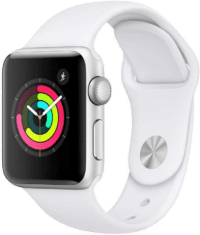 | Apple Watch Series 3 $169-$179 | Amazon | |
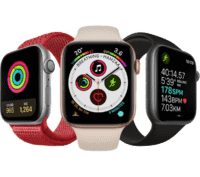 | Apple Watch Series 4 $399/$499 (cellular) | Amazon | |
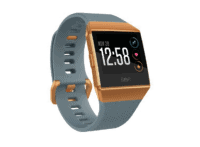 | Fitbit Ionic $229 | Amazon | |
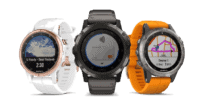 | Garmin Fenix 5 Plus (5/5S/5X) $699/699EUR | Amazon | |
 | Garmin Forerunner 645/645 Music $399/$449 (with music) | Amazon | Competitive Cyclist |
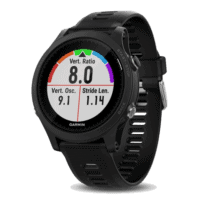 | Garmin Forerunner 935 $499 | Amazon | |
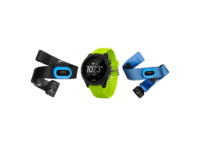 | Garmin Forerunner 935 - Tri Bundle | Amazon | |
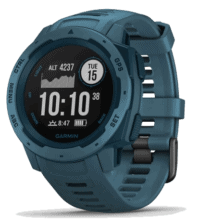 | Garmin Instinct $299 | Amazon | Competitive Cyclist |
 | Garmin Vivoactive 3 $129 | Amazon | |
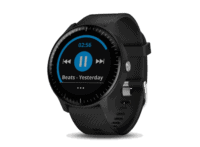 | Garmin Vivoactive 3 Music $169 | Amazon | |
 | Polar M430 $229 | Amazon | |
 | Polar M600 $329 | Amazon | |
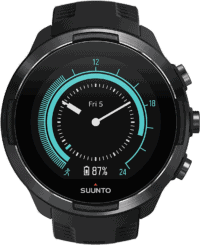 | Suunto 9 Baro $599 (non-baro is $499) | Amazon | Competitive Cyclist |
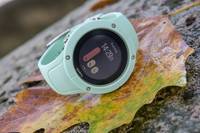 | Suunto Spartan Trainer Wrist HR $279 ($329 for metal bezels) | Amazon |
Triathlon GPS Watches:
This category is for what the industry calls ‘multisport’ watches, but that typically just translates to triathlon watches. They track your time/distance/etc… within the three sports – swim/bike/run. From a non-triathlon multisport aspect, these watches are often used by everyone from windsurfers to skaters, mostly because of their versatility and flexibility in configuration and display customization.
Note that the minimum requirement to be a multisport watch is specifically a multisport mode, which allows you to record multiple sports (e.g. swim/bike/run) in a single activity/file. If you have to stop the workout to change modes (like on a Fitbit), that’s not a multisport watch. That’s just a watch that happens to have multiple sports (at least by commonly accepted industry definitions).
Overall Best in Class: Garmin FR935
This remains exactly the same as last year. There’s a reason that Garmin dominates the category (seriously, look at these stats, they’re also near identical this year) – it’s simply got the most features for the price. No other triathlon watch comes close in terms of breadth of features. And unlike competitors, Garmin offers a quick release kit for quickly moving the watch from your wrist to your bike handlebars, and then back to your wrist for running. The FR935 contains all the new training load and recovery metrics and does so across multiple sports. You’ll also often find me using this watch as a reference watch for GPS accuracy specifically to compare others to.
So why not the Fenix 5 Plus? Sure, it’s a better watch in terms of features, but it lacks a quick release kit that many triathletes really like (and that the FR935 has). If you don’t care about that – then no biggie.
Budget Options: Suunto Spartan Trainer Wrist HR
This continues to be an astounding bet for triathletes, especially given how nice and small it is. It’s essentially a small version of the Suunto Spartan Ultra series, just without a barometric altimeter or the ultra-long battery life. It includes all the swim/bike/run goodness you could want, and unlike Garmin, they leave the optical HR sensor enabled during swimming (albeit with varying results). I suspect this will continue to be the best tri-specific budget watch for some time (various sales aside).
Finally – all that said, note that you can continue to find FR920XT on sale – usually for about $199. I’d personally get the FR920XT over the Suunto Trainer Wrist HR series for purely triathlon purposes. But just depends on what you can find (and the FR920XT doesn’t have an optical HR sensor like the Suunto Trainer Wrist HR).
Note: For triathlon I do NOT recommend the Garmin Vivoactive series or Garmin Instinct:
I want to be really clear on this. The reason I don’t recommend these watches is twofold, but mainly centers on the fact that they don’t support a multisport mode. Yes, it supports running, and cycling, and indoor swimming. But you can’t tie all those together in a race or training. Further, while the Garmin Instinct does support openwater swimming, it doesn’t support multisport mode.
This is pretty similar for some of the other running watches like the Polar M400/M430/M600 or Garmin FR230/235/620/630/645. Yes, they all support running and cycling, but none support multisport modes (nor openwater swimming). If you cycle sparingly and don’t swim, then they’re all still viable options.
Also, why not: Before folks ask, why not the Polar Vantage M for budget? It’s possible – but at this point it’s just not as full featured of a watch as the Suunto Spartan Trainer Wrist HR (for the same price). And for the COROS PACE? Same story – it costs more, but contains less. And the Polar Vantage V? While the Vantage V may have promise down the road, there’s no way you can say it’s equal to the FR935 given both are the same price – I don’t even think mid-next year by time Polar finishes adding back in all the features they removed from the V800 on it.
| Product | Amazon | |
|---|---|---|
 | Garmin Forerunner 935 $499 | Amazon |
 | Garmin Forerunner 935 - Tri Bundle | Amazon |
 | Suunto Spartan Trainer Wrist HR $279 ($329 for metal bezels) | Amazon |
Cycling GPS Units:
We saw a number of new units this year come into the cycling market, though, there was virtually no change in my recommendations (save two minor updates). That doesn’t mean goodness isn’t coming from others in the industry, as it is, but it just isn’t enough goodness to change my opinions.
Nonetheless what we see is continued competition from non-Garmin companies in the head unit market. All of which forced Garmin to answer with the lower-priced mapping Edge 520 Plus this year, at a slight $30 premium over the Wahoo BOLT and previous Edge 520.
Still, companies like Sigma, Lezyne, Hammerhead, and Stages are also pushing the market along. Some haven’t quite got their new goods released yet – for example, the newest Dash units haven’t begun shipping yet, so I can’t include those. And while Hammerhead has continued to add in firmware updates, the vast majority of those updates are minor bug-fix type things or slight UI tweaks. They aren’t big ticket features required to compete with the others in this list.
Best All Around Cycling GPS: Garmin Edge 520/Plus & Wahoo BOLT
There’s no major shift in this category. If you’re looking at a bike computer, these two and a half units are the sweet spot in the market. I say half, because the Edge 520 and 520 Plus are kinda treated like one unit. The Edge 520 Plus is the mapping variant that includes maps for your region, whereas the Edge 520 doesn’t include them.
Both base units are $249USD (but the Edge 520 Plus costs $279), an incredible price given the number of features packed into them. I put together a huge head to head post on these units last August that actually still stands, so definitely go check that out here.
Both units have minor nuances that may make one better than the other depending on your specific use case. So you kinda want to understand that the devil’s in the details there, but virtually everyone seems happy with whichever one they select.
Note that if you’re looking for mapping, then you’ve gotta decide to what extent you want true turn by turn navigation where you can re-route if you get off-course. Neither the Edge 520 (base) or Wahoo BOLT (or even ELEMNT) can do that. Instead, they do basic pre-planned navigation. The Edge 520 Plus however can re-route you mid-ride if you screw up. With the Edge 520 base or BOLT, you’re just given the general direction to get back on course. Still, I’ve navigated just fine with either option. Though, I’d note that while the Edge 520 Plus has routable maps, sometimes it’s a bit slow. Generally not a deal breaker, but I wanted to point it out.
Best Mapping GPS: Edge 1030 or Sigma ROX 12 (caveats)
I use the Edge 1030 as my main cycling GPS, except for days I’m using an Edge 520/520 Plus. Which is to say that as long as I’ve remembered to charge the Edge 1030, it’s my main GPS that’s on my center out-front mount. Obviously, I ride with multiple GPS units all the time for power meter testing purposes, but my ‘main’ GPS is whatever’s on my centered out-front mount.
In any case, I simply love it. While it’s a bit bigger than I probably need, it does things well and there’s no touchscreen issues (or clumsiness like the Edge 820 touchscreen). I don’t really know of anyone that doesn’t love their Edge 1030. Even the comments mirror that on not just my review, but all reviews. People are happy there.
Then there’s the newer SIGMA ROX 12. While it has slightly less fancy features than the Edge 1030, it excels in the navigation department. The Android-based unit is incredibly responsive from a screen standpoint (seriously, it’s crazy – it’s like a phone), and the display is stunningly beautiful. These days most of the initial bugs are all cleared out and users seem pretty happy. I’m not sure if I’d recommend it to everyone, but it’d definitely be within my ‘to consider heavily’ list for a lot of people.
Oh – and if you’re looking for a budget mapping option, check out the new Garmin Edge Explorer – which is roughly an Edge 1030 without all the advanced features. It’s an incredible value at $249, though it doesn’t have a barometric altimeter (so no incline values during the ride). Still, for many touring, this is a great unit as it’s also got a big display and is half the cost of the other two in this section.
Best Budget GPS Unit: Polar M460 or Lezyne Mega-C/Mega-XL
At about $100 cheaper than the Edge 520/Bolt is the Polar M460. It’s essentially got the core features you want on a GPS bike computer, in a rather nice little size. It can sync your rides afterwards via Bluetooth Smart, and soon also send those completed rides to Strava wirelessly, and even has Strava Live Segments. Plus it even connects to a power meter, unlike its previous generation M450.
Next, we’ve got the Lezyne Mega-X at $199. Lezyne has like 38 different models between $100 and $200, I tried to explain it all here a few years ago, and then they added more. They’ve all got minor nuances. This year they tried to simplify that some with the Mega-C and Mega-XL options. And to some degree they have. These were essentially updates of last year’s units with an overlay map shown (though it’s more of an underlay map I suppose).
The strength of the Lezyne unit over the Polar is the ANT+ sensor support (in addition to Bluetooth sensor support). So if you have ANT+ sensors already, you may want to consider this. Whereas if you have just Bluetooth Smart sensors you’re more of a free agent. But the budget options are still really solid. Again, check out my detailed post on it to understand those specifics.
So what about the Edge 130? It’s really solid at $199, especially in terms of sensor connectivity and if you want Garmin Connect IQ support. But, it also feels a little bit overpriced compared to the Lezyne and Polar options. Of course, you’re paying for the Garmin ecosystem. Also note that the Edge 130 wasn’t designed to be a replacement for the Edge 500 (which some folks seem to think it is). If you look at it like a budget GPS first, then it’s got fantastic features. But if you approach it as a smaller Edge 520, you’ll be disappointed.
| Product | Amazon | Competitive Cyclist | |
|---|---|---|---|
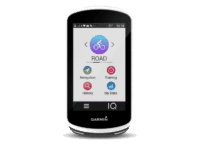 | Garmin Edge 1030 $499 | Amazon | Competitive Cyclist |
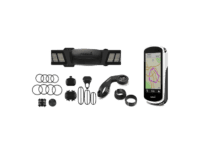 | Garmin Edge 1030 Bundle | Amazon | Competitive Cyclist |
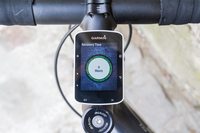 | Garmin Edge 520 $229 | Amazon | |
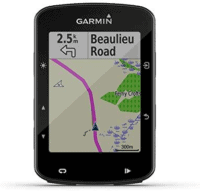 | Garmin Edge 520 Plus $279 | Amazon | Competitive Cyclist |
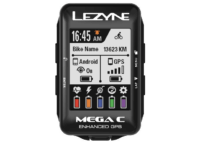 | Lezyne Mega-C GPS $199USD | Amazon | Competitive Cyclist |
 | Polar M460 $179 | Amazon | |
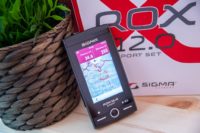 | SIGMA ROX 12 SPORT $349 | Amazon | |
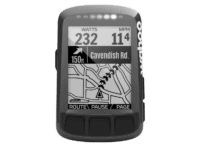 | Wahoo ELEMNT BOLT $229 | Amazon | Competitive Cyclist |
Swimming:
Year after year, swimming gets ignored by companies…and honestly, 2018 is no different than any past year. This is likely since many competitive swimmers don’t like to wear tech (or even a basic watch). So it’s hard to make inroads into the category with such a small market. Still, here’s some thoughts (which are almost identical to last year).
Indoor Pool Watch: “It’s Complicated”…with a side of Vivoactive.
This one is also messy, because I’ve previously recommended (and loved) the Garmin Swim watch. It was roughly sub-$150, but it’s also now like 4-5 years old and basically untouched. From a functionality standpoint it was great having a year-long battery life so it just hung out in your swim bag and sync’d when it was close to your computer. However, it lacked Bluetooth Smart for your phone to download that way, so it’s kinda lost favored nation status.
Instead, your next best bet is the Vivoactive HR, which usually sits around $150-$170 these days. And it’s just as capable in the pool. Plus, it has running and cycling and activity tracking and all sorts of other jazz. Still, I wish there was a Garmin Swim2 with Bluetooth for say $119…and done. Until then, my recommendation just stays the same as the last two years: Find an on-sale Vivoactive.
Also of note is that Fitbit’s Versa is another option as well (indoor swimming only), as it retails for $199, but I expect to see it on and off sale as well.
Openwater Swim: No good answer
Quite frankly, nobody makes a good dedicated outdoor swim watch. Your best bet here is to either get one of the multisport/triathlon watches for openwater swim mode (on your wrist). If so, check out the budget triathlon section. You’ll find the FR920XT or Suunto Spartan Trainer Wrist HR series is your best bet at a low price point. I seem to get marginally (barely) better openwater swim accuracy out of the Suunto series. Otherwise just use any GPS you have and plop it in your swim cap using the swim cap method.
Note that the just released Garmin Instinct does actually have an openwater swim mode, so if you tend to hike and do other wilderness type outdoors stuff, that may be something to seriously consider.
| Product | Amazon | Competitive Cyclist | Note | |
|---|---|---|---|---|
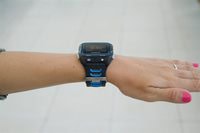 | Garmin Forerunner 920XT $249 | Amazon | ||
 | Garmin Instinct $299 | Amazon | Competitive Cyclist | |
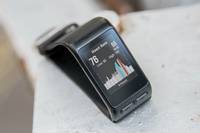 | Garmin Vivoactive HR $249 | Amazon | ||
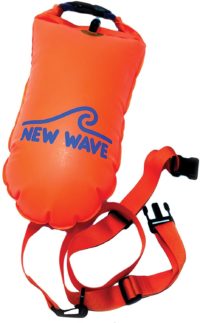 | Openwater Swim Buoy $45 | Amazon | Always openwater swim with a swim buoy. Always. First, it makes it so boats see me. Second, it provides a place to stash my phone/keys/clothes and even sandles. No, you don't feel it behind you. Works great! | |
 | Suunto Spartan Trainer Wrist HR $279 ($329 for metal bezels) | Amazon |
Sensors & Mounts:
If you’re getting any of the units listed above, you may be in the market for accessories. Obviously, some bundles include accessories, while others do not. Here’s what I recommend based on having entire buckets worth of accessories to test with.
In general, almost nothing has changed here in that I strongly favor dual ANT+/Bluetooth Smart sensors over single-channel version (e.g. ANT+ or Bluetooth Smart only). These sensors are available in all categories now. The reason for going dual is simple: It allows you the flexibility to choose whichever device you want and know it’ll work with it. Be it using it with apps like Zwift or Strava on Bluetooth Smart, or your bike computers or watches that just do ANT+. Or both at once!
Note that Garmin watches and bike computer devices from prior to 2017 are ANT+ only, though most 2017/2018 Garmin watches/bike computers are dual ANT+/Bluetooth Smart capable (the notable exception is the Edge 520 Plus, which is still ANT+ only).
Heart Rate Sensor (Optical): Scosche Rhythm+ or Rhythm 24
This is my primary and singular running/cycling/hiking/etc heart rate sensor (when not testing something else). The Scosche is dual ANT+/Bluetooth Smart, so it can transmit to just about anything. There’s the new 24 this year, though I haven’t seen a significant change in accuracy between the two. The new unit includes more features however, though some of those features might not be applicable to your use case. Note that I do really like the Polar OH-1, and I think the accuracy is just as good there as on the Scosche, however, since it’s not dual ANT+/BLE, it loses the top spot. The TICKR FIT is also fine, but it and I got off to a rough start earlier this year accuracy-wise, and I’ve never gone back to it. Some folks have good results with it though.
Heart Rate Sensor (non-Optical): Wahoo TICKR or 4iiii Viiiiva
Looking for a non-optical HR strap? I mostly use the basic Wahoo TICKR, though occasionally also the 4iiii Viiiiva. The TICKR is nice in that it has small LED’s on it so I can validate the battery hasn’t died. Whereas the Viiiiva has a boatload of extra features around ANT+ to BLE conversion, offline storage, etc…
Note, that I don’t find much value in the more expensive Wahoo TICKR X. Lots of cool concepts in theory, none of which I ever use.
Speed/Cadence (Combo): Wahoo BlueSCv2
Wahoo’s BlueSCv2 is what I use when I want a combo speed/cadence sensor, which includes both ANT+ & Bluetooth Smart (dual) Thus, two for the price of one. I love this model though because of the quick release bands making it easy to move between bikes if you need to. You’ll find this on all my bikes where I’m doing power meter testing, as I use the magnets as a ‘known good’ for validating cadence readings.
Bontrager also has a dual option out these days too, but I haven’t tried it yet. Most of these are made in the same factory and just rebranded.
Cadence-Only: Wahoo RPMv2
This one is another unit that you’ll find on many of my test bikes, mostly because of portability. I also take it with me travelling when I’m using a hotel spin bike. It’s a small pod that attaches to the side of your bike crank and it transmits on both ANT+ and Bluetooth Smart, so you can use it with your Garmin device or your smartphone.
Note that technically I find the Garmin ANT+ cadence-only attachment system slightly better than Wahoo’s, as it doesn’t require zip ties. But that’s not enough to sway me from dual ANT+/BLE.
Speed-Only: Wahoo SPEED
This is Wahoo’s dual ANT+/Bluetooth Smart speed-only sensor. I’ve been using it on my bike since (with a review I haven’t quite finished taking photos for…for over two years now). It simply attaches to your wheel hub and that’s it. No magnets or anything else to deal with. Maybe one of these days I’ll write a review, but given it’s my main speed sensor on my bike for two years now (including for aero testing), I suppose that’s probably as good a review as you’d want/need.
Running Footpods (ANT+): Garmin/Suunto mini-footpods (whatever is cheapest that day)
As long as you pick up any of those three above they all work the exact same way and all function with any ANT+ device. In other words, just pick up whatever is cheapest that day. Ensure that you aren’t picking up the giganto footpods of yesteryear. It’s hard finding an ANT+ only footpod these days aside from the Garmin one. If/when in doubt, check out my post on ‘All you ever wanted to know about the ANT+ footpod’. And yes, the older Suunto mini-footpods are actually public ANT+, despite what Suunto will say. Tons of people use them that way.
Regrettably, the only dual ANT+/Bluetooth Smart footpods out there are really expensive. There’s the Stryd Live (well, there was, but I think they stopped selling it for some reason), and RunScribe is or is shortly enabling footpod function too. Stryd was great as a footpod and many people use it, but it’s also really expensive ($99 for Stryd Live, and $199 for the running power meter variant).
One of these days Wahoo or Garmin or someone will realize this and offer a sub-$50 running footpod that’s dual ANT+/BLE.
Running Footpods (Bluetooth Smart): Milestone Pod
For $29 you won’t find a better deal for a footpod out there. Or heck, any sensor at all. It works great for me, and connects to everything from Strava to a Garmin FR935/Fenix5 (or any 2017/2018 Garmin watch). I’ve been using it on and off for about two years now. Note that Zwift did buy them back in June, though that hasn’t changed anything yet in terms of product or what-not. It sounds like the company plans to increase functionality over time, not decrease it.
Best ANT+ to BLE Bridging Solution: 4iiii Viiiiva & NPE CABLE
While this may seem an odd category, I keep getting requests for it – so I’m putting it here to assist folks in my recommendation. These allow you to convert ANT+ signals to Bluetooth Smart. This is primarily useful if you have older ANT+ only sensors and want to get them to watches (or apps, like Zwift on iOS or Apple TV) to Bluetooth Smart – especially expensive ANT+ only power meters.
The 4iiii unit is also a heart rate strap, that’s like two for the price of one (and a dual ANT+/Bluetooth Smart HR strap at that). It also has the ability to save data while away from the phone and the ability to work with ANT+ gym equipment (something Garmin watches used to do).
Meanwhile, NPE CABLE is a tiny little pod that you can stash anywhere. It translates a slew of protocols, including ANT+ FE-C. It’s awesome because it’s not a HR strap, and has a fair bit of geek functionality built-in for those that want it. Caveat: There isn’t an Android app available for CABLE to configure it at this point and time.
I’ve been using it lately though, and showed it off in my Zwift Apple TV post as well as my older Zwift Treadmill post.
Bike Computer Mounts (just computer): Bar 4 Prime
I love my Bar Fly, specifically for triathlon, the TT/Aero Barfly. I’ve been mostly using the Bar Fly 4 Prime lately, since it works with both larger and smaller head units, as well as has the GoPro style mount below it (which I use for my GoPro as well as lights and aero sensors). Honestly though, it’s probably overkill if you just have a smaller bike computer, you can go with their cheaper mounts.
What’s also ideal about the Bar Fly kits in particular though is that they come with mount options for everyone – Garmin, Wahoo, Polar, etc… are all in there. K-Edge also makes some great mounts too, but I like the fact that Bar Fly includes all the extras for free.
Bike Computer with Action Cam Combo Mount: K-Edge Combo Mounts & Bar Fly Prime
In the event you’re going to hang an action cam from your bike computer mount, that’s where I typically recommend you stick to something metal based, be it from K-Edge or Bar Fly. Read more on that in my action-cam section though. Seriously, I’ve bought more K-Edge mounts over the years than any human should have. Actually, I buy so many because sometimes I’ll mount 2-3 mounts on just the front bars alone for action cam comparative testing. These mounts stay-put and make everything awesome.
I’ve got no issues with the new Bar Fly’s metal mounts, including their rear seat post action cam mount, it’s rock solid too. And their Prime matches what K-Edge has and I’ve been using it lately too in that it’s aluminum based. Plus, it has all the mount adapters for different bike computers in the box.
| Product | Amazon | Competitive Cyclist | |
|---|---|---|---|
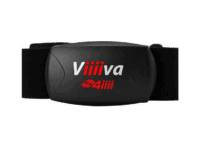 | 4iiii Viiiiva ANT+ to Bluetooth Smart HR Strap & Bridge $79.00 | Amazon | |
| Barfly Prime Out-Front Mount $43 | Amazon | ||
 | Barfly Tate Labs Road Bike Handlebar Mount $25 | Amazon | |
 | Barfly Tate Labs Timetrial/Triathlon Bike Mount $37 | Amazon | |
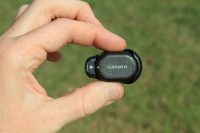 | Garmin ANT+ Running Footpod (Mini) $45 | Amazon | |
 | K-Edge Action Cam Mounts Varies | Amazon | |
| K-Edge Garmin/GoPro Combo Out-Front Mount (Cycling) $53 | Amazon | ||
| K-Edge GoPro Saddle Mount $39 | Amazon | ||
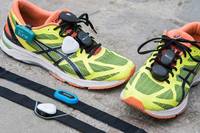 | Milestone Pod $29 | Amazon | |
 | NPE CABLE $59 | Amazon | |
 | Scosche RHYTHM+ $79 | Amazon | |
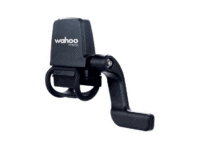 | Wahoo Blue SCv2 - Bluetooth Smart/ANT+ Speed/Cadence Sensor $59 | Amazon | |
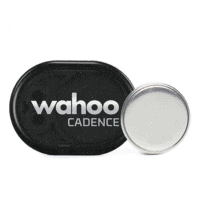 | Wahoo RPM (Bluetooth Smart/ANT+ Cadence Sensor) $34 | Amazon | Competitive Cyclist |
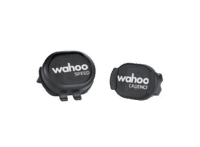 | Wahoo RPM+SPEED Bundle (Dual ANT+/BLE) $69 | Amazon | Competitive Cyclist |
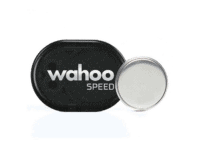 | Wahoo SPEED ANT+/BLE Sensor $39 | Amazon | Competitive Cyclist |
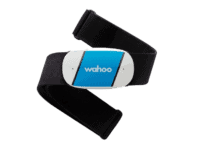 | Wahoo TICKR (Original) $49 | Amazon | |
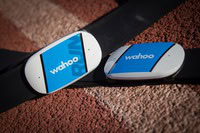 | Wahoo TICKR RUN $79 | Amazon | |
 | Wahoo TICKR X (Original) $79 | Amazon |
Weight Scales (WiFi):
I wrote an entire post about WiFi weight scales three winters ago, and virtually all of it still applies since very little has changed, so it’s probably best to just read that weighty awesomeness. That post also covers how to get the Fitbit/Withings scales to feed data into Garmin Connect and other platforms.
The only things notable since then is that Fitbit released an updated scale a year ago, though the shifts are minor. Additionally, Withings was bought by Nokia. Nokia mostly did things to screw up all the good Withings had done, but this past year Withings then somehow bought itself back from Nokia, and seems to be back on track of undoing the screwups. Plus, the scale pieces weren’t really impacted by Nokia’s meddling. I’ve got the latest new Withings wearable here, so I’ll probably be looking at the entire Withings suite again over the next few months in more detail.
Best Options: Fitbit Aria or Withings Body
I’ve been including little snippets of these scales in my Fitbit Surge and Withings Activité reviews. Overall, either scale is a solid option and really just depends on if you’re aligned to either of those platforms already (Fitbit or Withings). If not, poke at the slight differences with 3rd party partners, and see if either of those partnerships matters. Failing that…flip a coin.
Seriously – they’re near identical scales. Any other relevant differences are partnerships or platforms. And, again, they’re both great scales. I use them both, frankly just depending on which bathroom I’m in.
*The one exception here is the Garmin Index scale, if you’re heavily aligned to Garmin as a platform and want your data in that platform seamlessly. But otherwise, I think all of the fancier/higher end scales are overkill compared to these usually $100/sub-$100 options above. Plus, people seem to have more issues with the Garmin scale than not. It seems to be Garmin’s forgotten product. Like, when something breaks on it, it’s months before someone at Garmin seems to realize it and then decides to go on vacation before fixing it. There’s no product review I’ve written which has more people saying they’ve had issues than that one.
| Product | Amazon | |
|---|---|---|
 | Fitbit Aria WiFi Weight Scale $129 | Amazon |
 | Garmin Index WiFi Scale $149 | Amazon |
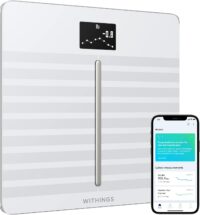 | Withings Body WiFi Scale $59 | Amazon |
Action Cams:
Best All Arounder Action Cam: GoPro Hero7 Black
There’s no question the GoPro Hero 7 Black is the best camera that GoPro has ever made. Then again, I’d hope so since it’s the latest one (came out back in September). Still, while there are always going to be some GoPro haters, they are pretty hard to find this year. It’s really damn impressive – especially the new stabilization, but also even the improved audio quality. Love it. Like the last few GoPro units, it’s fully waterproofed, and the back touchscreen is brilliantly clear, and the video quality is equally as awesome.
I’ve got virtually no complaints, except of course that I wish they’d make a darn mic adapter that isn’t as big as the camera itself. Or just be logical and accept Bluetooth mics like other cameras including the Gamin VIRB Ultra.
So what about the VIRB Ultra 30 camera?
So in past years it was always kinda a bit of a competition between the two. Typically GoPro would barely edge Garmin VIRB Ultra 30 out in video quality (or the fact that the GoPro didn’t require a waterproof case), but Garmin would easily win with better sports metrics (data overlays). And the second part is still true. GoPro’s data overlays would be like comparing a drawing from my 2-year old to that of a professional artist of 70 years with galleries in major metropolitan cities. Garmin is in an entirely different league here when it comes to sport/data overlays.
Unfortunately, with the Hero 7 Black’s new stabilization modes, GoPro is also in a different league for stable video. Not to mention that if I’ve got another Garmin device (like a Garmin watch or bike computer), I can take that file and merge it with the GoPro footage in Garmin’s free VIRB Edit. It’s not as one-step simple as using the Garmin VIRB is (but again, it’s really still pretty easy). Ideally, Garmin would counter GoPro’s Hero 7 Black – hopefully even one-upping it. But I’m not sure if that’s a battle they still want to fight.
I think Garmin could fight it, but they’d need to double-down in resolution or other specs to win media/geek attention (which ultimately would increase market share, since people buy action cameras based heavily on YouTubers saying to buy a given action camera, and YouTubers love higher resolution and higher frame rates…and of course, really buttery smooth stabilization).
Best 360 Cam: Shrug
Last year I gave the win to the Garmin VIRB 360 cam (which has 5.7K resolution), mostly because GoPro’s Fusion was just barely shipping and not all the puzzle pieces were out yet.
These days though, I rarely use either camera and would strongly encourage folks to really think about their workflow. Editing and dealing with 360° footage takes a long time, no matter the camera. In terms of workflow, Garmin’s is FAR and away cleaner in terms of a single cohesive suite. Whereas GoPro’s software suite is prone to crashes and indexes slower than a dead turtle.
On the flip side, GoPro’s plugins for Adobe Premier are incredibly powerful and really make the software shine. Whereas on Final Cut Pro you can use Apple’s native tools, but there’s still some moves that aren’t possible without first passing through GoPro’s software. Plus, you still need GoPro’s software to stitch everything too. Thus, everything remains cumbersome.
Basically though – if you plan to do data overlays, I’d easily go Garmin. Whereas otherwise I feel I get better quality/resolution/stitching from the GoPro solution. That could well be because GoPro includes a specifically designed pole that gets the pole exactly cropped out of the frame – so it appears your camera is hovering in mid-air. Garmin lacks that.
Best Safety Cam: Cycliq Fly6 CE & Fly12 CE
Next, we’ve got the Cycliq cams. If you’re not familiar, this isn’t an action cam per se, but it’s the closest category I’ve got. It combines a rear light (which you’d want anyway) with a camera. Basically, this is a safety cam. And not in the sense that it’s going to save your ass, but rather, it’s like an insurance policy for later. I have it on my bikes while riding around the vast majority of the time and it’s just silly easy to use.
Now, this isn’t really a replacement for a GoPro or the like, it doesn’t have anywhere near that level of quality. Rather – it’s just so in the event something bad happens to you – you can prove it wasn’t your fault, or even better – catch the person if they left you at the scene.
There’s also the Fly12, which is for the front side. I’m not as big of a fan of this since it’s a bit bulky/heavy for my tastes (though, I fully understand why – given longer battery desires). But since there’s nothing else out there…the Fly12 it is.
Note that some people have had some teething troubles on these, primarily in the realm of battery burn. It’s hard to say whether this is super wide spread, or just a vocal minority.
Action Cam Mounts: K-Edge Action Cam Mounts
Now, while I often use the Barfly for my bike computers, I really prefer the K-Edge mounts for my action cams (when a bike computer isn’t involved). I’ve come to love the sturdiness of the K-Edge mounts, especially the combo mounts they’ve made (Garmin + GoPro). It’s hard to explain to someone how incredibly rock-solid these mounts are until you attach a camera to them and don’t even get a sliver of a millimeter of sway on them (unlike a stock mount). Incredible. I’ve bought front/back mounts for every bike I have, love them.
| Product | Amazon | |
|---|---|---|
| Garmin VIRB 360 $799 | Amazon | |
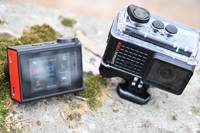 | Garmin VIRB Ultra 30 $399 | Amazon |
| GoPro Fusion 360* Action Cam $599 | ||
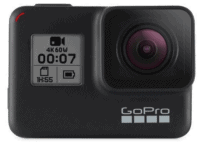 | GoPro Hero 7 Black $329 | Amazon |
Drones for Sports:
Drones continue to become more and more popular in sports. And it’s the category I probably have the most fun playing with in the last year or two. Likely just because it’s combining a few of my passions: Photography, sports, and aviation.
Drones have advanced so much in the last 12 months it’s mind-boggling. Now you’ve got obstacle avoidance, person tracking, 30-minute battery life, 4K stabilized cameras are the norm, and automated cinematic moves are expected.
When it comes to drones you’ve gotta decide what you want the drone for. Is it 100% to capture sports action of yourself, or is it cinematography/photos/etc…with a side of sports action? That will help you decide which drone is best. Personally, I’ve come to prefer an all arounder, since I think it’s more useful on vacations/etc.
Best All Around Drone: DJI Mavic Air
This came out earlier this year and is a rock star with a reasonable price. It’s got 4K video and can do some basic (very basic) tracking of you in a sport setting. While it doesn’t have as good of Active Track as the new DJI Mavic 2 (which is much better in that department), I find that the Mavic 2’s limitations for Active Track still make it less ideal for most people (you can’t use a phone to track like you can with the Mavic Air, you have to use the dedicated controller+phone concurrently).
Video and photo quality on the DJI Mavic Air are fantastic, as is the ability to operate in high wind conditions (as I showed in some of my videos). Plus, you’ll find it on sale this holiday season as well. Seems like a no-brainer.
Note that the DJI Spark however is a freakin’ fantastic all arounder as well, and usually under $400. It lacks 4K support, but for most social media type applications you won’t notice. It’s buttery smooth and remains awesome. You’ll actually find me taking it just as often as the Mavic Air. Basically, if I’m taking photos only, I’ll take the DJI Spark, whereas if I’m taking video, I tend to take the Mavic Air.
Also, I do indeed really like the new DJI Mavic 2 – but for most people it’ll be overkill.
Best Solo Shooting Sports Action Drone: Skydio R1
When it comes to sports tracking though, there’s no competition. Not even the same league anymore. The Skydio R1 with its 13 cameras that track you is a thing from the future. Albeit with a heavy $1,999 price tag. But try running from: It’s nearly impossible to escape except in the densest of brush. The unit does feature 4K video and merely uses your phone for initial setup/control (but then the object recognition futurist movie tracking takes over after that). You can also use their just-released Apple Watch app for control as well.
The only downside to this drone is the video quality simply isn’t in the same league as the DJI drones. And as the name (R1 – Release 1) implies, this is the first generation, and I feel sooner or later there will be an R2, and that’s probably a better timeframe to get into things. If they can address the video quality and the portability of it (along with the price), I’ll be a buyer. But in the meantime, if you absolutely need the best solo sport tracking drone – there’s no competition, this is the best.
Activity Trackers:
So…here’s the thing, in the past, I used to have a section here on activity trackers. But the market has simply gotten so big, and the features in general overlap each other on so many units. It’s nearly impossible to simply say “Go get a Fitbit” or “Go get a Garmin” or “Go get an Apple Watch”. Frankly, from a basic activity tracking standpoint, they’re all so similar.
Even this year with the new Fitbit Charge 3 and the competing Garmin Vivosmart 4, they’ve both near matched each other (days apart) on the underlying hardware features. One added SPO2 tracking, and then so did the other.
Instead, it’s really best to look at whatever activity trackers either:
A) Your friends are using
B) Your existing device is on
Seriously. If you’re motivated by competing with friends, then you want to be on the same platform as them. So if they’re all on Fitbit – go get a Fitbit. And same goes for Garmin or Apple, or anyone else. If your friends are all on Apple Watches, then you can’t compete with them using a Garmin device.
Secondly, if you already have (for example) a Garmin device, heck, it’s likely it has an activity tracker in it. But say you want something else – in that case, get something on the same platform as that – so you can track everything in one place. It’d make no sense to have a Fitbit activity tracker and a Garmin GPS watch.
There are of course nuances to each unit out there. Some do optical HR slightly better than others. While some have more sports modes than others. And some have coaching, while others have better smartphone integration. And of course, now some even have GPS (like the Vivosmart HR+ and Vivosport). Most of them are within a pretty small price window, so it’s really best to figure out what suits you.
Next to last – the vast majority of activity trackers are roughly accurate. By that, I mean that no activity tracker on the market is perfect. None. Instead, they are estimations – treat them as such. Each company tries to fine tune their algorithms for various use cases. Some might be better at guarding against false positives in the shower, but less so doing dishes. Others the inverse. What matters is that at the end of the day if your activity tracker said you only did 2,000 steps, and your goal was 10,000 steps – then you were…lazy. Meanwhile, if it says you did 9,782 steps and you think you really did 9,923 or 9,458 – just go walk around the block an extra time. It’s about tracking trends – not exacts.
Lastly, in general I prefer activity trackers that have a display on them. If I didn’t need a display, then most phones these days can track 99% of your awake time anyway. So for me, I want to be able to glance at my wrist and see how many steps I have and how far from a goal I am.
Cycling Power Meters:
Choosing a power meter is a tough decision matrix. Anyone who answers the question “Which power meter should I choose?” and instantly names a specific brand name/model upfront, is full of crap. The correct answer is “Tell me more about your usage plans?”
There are so many variables that go into that decision beyond just price. For example: How many bikes? What type of bike? What type of pedals? Do you want to move it around a lot? Race wheels or not? What do you want to measure? And on and on.
The good news is that I cover these in-depth in my Power Meter Buyer’s Guide from a mere three days ago. Nothing has changed there since then (neither in products nor in my opinions), and I don’t expect any shifts till at least next spring.
Cycling Trainers:
The best way to cover this section is to go read my complete winter 2018 cycling trainers guide (from just a couple of weeks ago), so again like power meters, I’d go over and check out that post for all my recommendations (a massive list on a slew of categories).
Obviously, given it’s now basically the trainer season, there’s no more trainers coming out till at the earliest mid-next year, with most announcements typically happening at Eurobike in July next year (a shift from August).
Don’t Forget the Product Comparison Tool:
Ok, lots of recommendations. If there’s a category I’ve missed (entirely plausible) – just drop a note in the comments and I’ll try and come up with a recommendation and add it above.
More importantly though, you can mix and match just about everything I’ve talked about above, with in-depth comparison tables over at the product comparison calculator, which today supports: Action Cameras, Drones, Heart Rate Straps, Watches/Bike Computers, Power Meters, Activity Monitors, and Trainers.
Select product use/budget for a comparison from the drop down menus:
Note: While many running watches have a basic bike mode, only running units that are multi-sport focused are also included in the bike-only results (in addition to bike-specific units). Hiking units are those that include a Barometric Altimeter, Magnetic Compass and navigational functions.
Or select products for comparison by clicking the product boxes below:
—
As always, thanks for reading – and supporting the site!

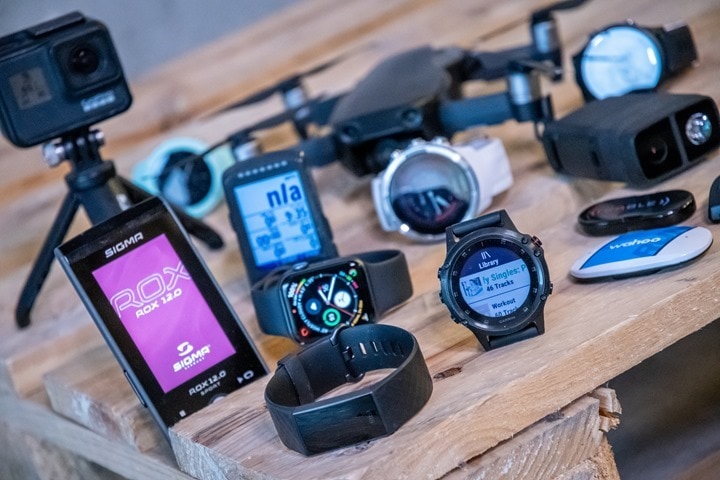




























First :)
Please make some recomandations for indoor gym trackers! Not all are able to go and run outside or use a bike! Thanks a lot!
I’m with you Alexandra, I’d love to see a comparison of more gym based trackers, I currently own a Fenix 5x and still can’t find an app that’s as good for weight training as my old (very dead) Polar ft 80.
Sorry, Alexandru, auto correct decided to change your name.
Worth mentioning that the NPE Cable ANT+->Bluetooth bridge needs an iOS app to configure it (once you’ve configured the sensors to look for, you no longer need the app).
If you’re in my boat with nothing but Android devices and a need to get ANT+ devices to talk to them, you’ll need to keep looking.
Good call, added!
May I ask the reason for the complete omission of the Vantage Series?
It’s in there
Also, why not: Before folks ask, why not the Polar Vantage M for budget? It’s possible – but at this point it’s just not as full featured of a watch as the Suunto Spartan Trainer Wrist HR (for the same price). And for the COROS PACE? Same story – it costs more, but contains less. And the Polar Vantage V? While the Vantage V may have promise down the road, there’s no way you can say it’s equal to the FR935 given both are the same price – I don’t even think mid-next year by time Polar finishes adding in back all the features they removed from the V800 on it.
I discovered your site about a year ago when starting to research to upgrade from my Charge 2. I love your “honest” and in-depth reviews (not just spewing out the same info as everyone else). Like I said, I’m looking to upgrade from my Charge 2. I’m not a hard core athlete, I’m not training for any marathons or triathlons. I’m just looking to get fit (and lose some weight) through a variety of activities (Walk/run, casual lap swimming, gym workouts, casual biking, etc.) I don’t need a fancy smart watch that tracks a million different metrics, but I am a bit of a numbers geek. I really want something that will accurately track my calorie burn to meet my fitness goals. Also, looks are important to me (i like everything about the Vivoactive 3 but it is just too big & bulky for my taste). I think I’ve narrowed it down between the new charge 3 & Versa, but I just can’t decide. Other options I’ve considered are the new Vivosmart 4 & Vivoactive 3.
Hi Amy, thanks for the comments!
I think the Versa is probably the better bet for ya, mostly because you’re already in the Fitbit ecosystem and have lots of data there. While you can convert some (a lot) of that to Garmin via some conversion tools, not all of it does so in a pretty or consistent manner.
Certainly, the Vivoactive 3 would be a big jump, as it contains GPS whereas the Versa would rely on your phone’s GPS if you wanted tracks. But the Versa can also be like the Charge series and just use the accelerometer for distance.
Not sure where it would fit into your list, but there is no mention of the Edge130. I have a 1030 as well but unless I’m riding in unfamiliar territory, I pull out the 130. Small, light, clear crisp screen.
On another note, I’ve been using a Fenix 5Plus now for about a month, in addition to my tried and true 935. I much prefer the 935 still for the size, weight and battery life. Again, unless I need mapping. But running, I definitely notice the extra bounce and rubbing from the heavier watch unless I cinch it tight enough to cut off my circulation.
Another device I don’t know quite how fits into this list is the Varia radar. A device I poo pooed because most of the time I don’t mind looking back and am pretty relaxed in traffic. But I have loved it. Not so much in heavy traffic but on rural or windy roads. Especially those high speed windy descents lets me keep my eyes on the road.
There’s a paragraph headed “So what about the Edge 130?”
“he Varia radar. A device I poo pooed because most of the time I don’t mind looking back and am pretty relaxed in traffic. But I have loved it.”
Overwhelmingly this is the case with the Varia radar. Those that haven’t tried it think it’s stupid, but those that have actually used it, love it. Obviously, assuming they’re using it in a non-city setting as you noted.
ekutter,
The varia UT800 headlight fits in the same boat as the varia radar. You wonder what you are thinking spending that kind of money on a head light, but it is really cool once you have it. I can literally see the difference in driver’s attitudes when you are using a large light, i.e. 800 lumens, versus a small led. For whatever reason, they give you a wider berth when you have a brighter light. Definitely worth it.
Hi Ray! I’m mostly a runner, but have gotten into triathlons. I currently own a 920XT but plan to pick up a Varia RTL510 to use for my long solo bike trips (like biking from Seattle down to San Diego).
As the 920XT doesn’t support ANT+ lightning or radar, do you suggest I buy an Edge to use the RTL510 or sell my 920XT and upgrade to a 935? Thanks for all you do and any suggestions you can give me!
I think that the Edge tends to display the data in a more consumable/glanceable format than the wearables. Mostly just because it’s an easy glance down versus a wrist twist and a glance.
I’ve been using a TICKR FIT since May, and it’s been great. The first time I used it I saw a weird low reading, after that it’s been solid. The battery lasts forever in it, and it doesn’t look like some weird chunky thing from the 1990s. Some people were having issues with the strap falling apart, but I’ve not had a problem with it.
IMHO the battery life makes it superior to the older Scosche, and the $20 cheaper price beats the newer one (I have no need for the extra features the Rhythm24 has like cadence and recording as I’m exclusively cycling).
Just my 2c.
Product Comparison Tool — No doubt a pain to do, but shouldn’t “Virtual Training (Cycleops)” be changed to “Rouvy (Virtual Training)”?
I know you don’t like to review trainer apps too often, but Rouvy AR looks awfully compelling as something new this season.
Yeah, a lot of the apps in the app database are slated for their update over the next two weeks. It’s kinda like getting your bike checked up at the shop every year or something.
Garmin is offering $50 Mail in rebate if bought from an official garmin retailer for Edge 520 820 1030: link to garmin.blogs.com
Just waiting for another deal to add on top of this.
From a generic buying perspective, this might be of interest:
link to bicycleretailer.com
With performance bike and nashbar declaring bankruptcy
Not so sure about your comment “exempting the more advanced Withings Body Cardio with advanced metrics like Pulse Wave Velocity” as that feature has been removed:
link to support.withings.com
Ahh that’s right, forgot they got into trouble over that.
Ray, I know I’ve looked for this, but haven’t gotten a clear answer. Is there a way to get the Bolt data to Garmin Connect easily? I have been waffling over the Bolt and the 520/plus/130.
Thanks buddy.
Oh, and the Dash series as well, how difficulty to get them to talk to Connect.
check out tapirik. i probably spelled that wrong.
I’ve synced the bolt to Dropbox. On completion of ride gone to pc and uploaded file to Garmin connect. Had issues initially with viewing ride on connect but appears to be working alright now. Connect then syncs to Strava so appears on both platforms.
Was paying for tapiirik for a year, but then all of a sudden it stopped working completely (I had strava -> runkeeper and strava -> garmin connect). After a while it started working again, but there’re apparently some issues with Garmin Connect so I stopped bothering.
In the Edge 520 vs 520 Plus discussion there is an important hidden distinction between the two that can impact some users (hidden in that that map part is obvious) is the connect iq functionality. The 520 plus is much better there and allows apps to take up much more memory:
520 plus:
app id=”watch-app” memory_limit=”1048576″
app id=”widget” memory_limit=”1048576″
app id=”datafield” memory_limit=”131072″
520:
app id=”watch-app” memory_limit=”262144″
app id=”widget” memory_limit=”262144″
app id=”datafield” memory_limit=”32768″
Some apps have had issues where on the 520 the app doesn’t work as well because they have to be very careful about memory resources (some app limit functionality on the 520). Note the 520 plus, 820, 1000, and 1030 are the same in terms of amount of memory apps can use so easy to target features that work on all 4 of those only to have the 520 fail. Plus the 520 only supports Connect IQ version 2.4.6 while the 520 plus supports 3.0
For the “Best ANT+ to BLE Bridging Solution” it might be important to mention the cable device is iOS only for configuration (Viiiiva supports iOS and Android):
Q: Can I use CABLE with my Android phone or tablet?
A: Currently, the CABLEConfig app is only available for iOS. Once your CABLE unit is configured you can use it with any hardware that uses BLE sensor connections. This will work with Android, iOS, Apple Watch, Windows, etc.
link to npe-inc.com
Nice work Ray.
Any new recommendations for GoPro gimbals? It’s been over a year since I’ve seen a review. Which I guess I can assume means they’re still working fine?
With the Hero 7, I’ve largely stopped using them, except for rare cases such as trying to film bike head units while riding. In that case I’ve actually backtracked a bit and gone with the GoPro Karma Grip. I’ve found that longer-term it’s just a bit less finicky.
While it has less features for sure, I can put a camera in and out of it quicker (even mid-ride without stopping), and I find that it’s less likely to get off-kilter.
Ray, when is your review of Polar Vantage V coming out? Judging by few sentences here about it, it’s gonna be brutal.
Current plan is a bit later this month.
I’ve been using one since launch and I’d say at this point a review will do more harm than good. It’s not even the lack of features. The features that are present would be enough to make it a fine running watch. I’ve had LOTS of issues though. Recovery Pro has consistently told me not to do any training every day because I might get injured. Using a workout crashed the watch. a 5km run on a treadmill recorded 1km.
Logging issues with support feels almost like asking a stranger in the street the same question. You get a long pause followed by a nonsensical answer. Support first told me to that the Vantage uses GPS for speed and distance so maybe that’s why the treadmill distance was wrong. Then they said I needed a footpod. Then they said the watch was faulty.
And all of this ignores their obnoxious platform which doesn’t play remotely well with others. Your options for updating weight are Polar Balance Bluetooth scale (yes, like the olden days) or manual entry. If ANYTHING goes wrong with your Vantage your stats are useless for a month because there’s no way to import an activity or even correct an activity.
Long story short, Polar have a very nice device with a lot of thought gone into how it could help you train but very little of it works. There’s a lot I dislike about Garmin, but since buying a Suunto and Polar I’ve realised they are the most popular for a very good reason.
This has not been my experience with the Vantage, at least not since the FW update.
I have found the Vantage to be great with the nuts and bolts of training, and still prefer Flow to Connect in terms of a software platform. Even though Garmin more open, I’m not sure that workouts imported from a 3rd party would be reflected in Garmin Training Load, so really Garmin prefers it’s own hardware as well.
I have also found the Polar training load and recovery metrics to be on point for me so far.
For sure the 935 has more bells and whistles, but the vast majority of these I have never used in a year and a half, and are of questionable utility.
For training and recovery basics, both the Vantage and 935 are great to me. As things stand now, I prefer Polar hardware, Garmin firmware, Polar for load/recovery metrics, and Polar software platform :).
Once footpod support and training by Power Zones are implemented in the Vantage, I would lean towards Polar on for everything.
Don’t get me wrong – I love the Vantage. Polar have put real thought into a lot of the aspects of the watch and website and if/when it all works it’ll make the Fenix look like a quite basic training watch. The problem is Polar have shown themselves to be a slow company so Garmin can casually keep up without much trouble. Polar have also demonstrated their poor customer support, so my expectation is the Vantage will go the way v800 did – lots of promises never quite fulfilled.
My point though, was that today it doesn’t have all the features and the ones present are quite flaky so any in depth review is going to show this watch in a poor light.
Ray any plans to touch an Amazfit Stratos at some point?
I’ve been using mine since April, and I think it would be a good candidate for best budget Multisport watch (can be found for around $100 less than other options). They’ve improved a lot throughout the year with FW updates. Two hardware limitations they can’t get around (Bluetooth only and poor optical hr performance). Other than that, this thing is great; looks, feels, and functions really well.
What about AR cycling glasses? :-)
Or wireless brakes? ?
Ray, what has been your experience with the durability of the TICKR heart rate strap?
I’ve been using the Garmin soft strap and had the conductive rubber pads delaminate in a matter of months; Garmin replaced that under warranty. This seems to be a common experience. Just wondering if the Wahoo holds up over time.
I’ve had some random TICKR issues as of late with one of my units, though I’m not super clear which one it is yet (I suppose the problem of having 3-4 of them floating around). But I’m also not 100% sure that I have the correct strap on it (the pod) anymore. Meaning, sometimes I grab a strap and end up swapping it around for whatever reason.
own a tickr with original belt for about 3 years. was used more than 500 hours, still ok.
On the mavic air…will it fit in a cycling jersey pocket so that I can take it along on my ride easily?
Yup, easily!
Check out my Stelvio video from this summer showing it that way: link to youtube.com
Awesome! Thanks! Headed to France next summer and want one to carry with me.
I don’t know if this is the right place to ask, but in the next year or two I’m looking into doing some more “touristy” type marathons, where I won’t be trying hard for a best time, but wanting to see the sights along the route. I’m thinking I might want to take some pictures during events like this. I don’t like carrying my phone with me (plus when I do, it’s always awkward to take the picture, and they never come out well). The GoPro Hero line seems like it would be overkill (but if not, then I’d consider it). Any recommendations for small, easy to carry and/or tuck away into a pocket while running cameras that might fit the bill for this?
NIKON KeyMission 80 might be good for that :)
I use the HTC Re camera and love it – fits perfectly in jersey pockets and takes great action shots.
Hi Nighthawk -I use the HTC Re camera for this sort of thing and love it – easily fits in jacket pockets and takes good action shots/ videos.
btw The Cadence-Only: Wahoo RPMv2 works well tied onto my shoelaces – makes it easy when swopping bikes :-)
I too have found the Wahoo RPM2 cadence sensor’s shoe mount to be quite handy. I originally had the sensor mounted on my crank , but removed it when I got a Powertap hub which does a decent job determining cadence from the cyclical torque variances, at least on the road (more on that later). After the power meter purchase, I started using the sensor in the shoe mount when doing the occasional spin class at the YMCA, and when riding my otherwise-sensorless mountain bike, and eventually, when doing winter training with my Powertap-hub-equipped bike on a “dumb” trainer. Not sure if it’s my specific trainer, all fluid trainers, or contact trainers in general, but, my Powertap hub was showing wild swings in the cadence readings. The RPM2/shoe-mount combo was a quick, easy fix.
Ray, given The Girl has expressed her deep concerns about us fellas going out running with headphones+music and becoming natural selection statistics, do you have any recommendations for headphones that allow you to keep situational awareness? The ones I’m aware of are the AfterShokz Trekz Air bone conducting whatsits and the Plantronics Backbeat Fit 3100 with their ‘Always Aware’ System; there may be more. Which ones should we be putting on our lists for Santa?
Another recommendation would be the Samsung Icon X earbuds. Not only can you store your music on them, they have a ‘passthrough’ where you can still hear the outside sounds being picked up on the external mic and pushed through into the earphone. That function works great.
What isn’t great however, is the battery life. 3-4 hours TOPS if you’re playing standalone music with passthrough. But For the gym, or for a 10km (~5.5 miles) run, they work great.
Plus because of the poor battery life, there are tons available for cheap. I picked mine up for under $100 on Amazon.
My chief problem with the BarFly aluminum mounts is that they were designed with a one-size-fits-all mentality for huge 35mm MTB handlebars, with shims for all other sizes. They look ridiculously oversized on roadbike bars.
K-Edge sells separate 31.8mm or 35mm mounts to fit whatever bar size you have.
Which Cycling GPS, the Edge 1030 or Sigma ROX 12, can better hold up when cycle touring in the rain? My Garmin 800 goes haywire after an hour of moderate rain, and Garmin tells me the 1030 has the same water rating.
No mention of the Garmin Edge Explore?
That’s valid, I’ll make mention of it within the mapping one, since that’s definitely viable.
Ray
Garmin Swim, still the best watch for the pool!
Somehow, astoundingly.
Another great year-end post. Question though — in the “Gear I Use” list, the Garmin Fenix 5 Plus popped up a bunch, but it only shows up here as an honorable mention….would you recommend these others over that? Is it “snubbed” or are these selections driven by budget? Just curious…
Thanks!
It’s listed in the running watch section as a main option.
Ultimately, it’s sorta the beast of all sections. I suppose if there was a ‘best overall watch’ category, it’d probably win it easily.
Thank you!
Hi Ray, I want to get a garmin running watch for my 11 year old – she currently has the garmin vivofit jnr, but wants to start tracking her runs. It would need gps and ideally hr monitor, with the ability to download data to her ipad (she won’t have a phone for another year or so). Definitely looking at the more budget end, but a key consideration is a band that will fit her wrist, which is tiny. Any ideas?
I’d recommend one of the base Forerunner 10/15/25/30/35 type units. I think the Forerunner 25 is the least expensive one that offers Bluetooth Smart connectivity.
Another option that actually might work really well is the Vivosport band, since that has GPS and I think the band is a bit smaller. The display isn’t quite as easy to use for a kid as the Forerunner, but it might fit better.
Historically speaking all of the lower end Vivos and Forerunner watches have seen sales for the Black Friday timeframe, so you’d probably be good waiting a few more days to see what pops up.
My two running daughters currently use TomTom. After a bunch of research, Santa is likely to deliver a couple of forerunner 35s this year (care of clever training and very kind colleague who’s heading to Boston from the UK on business soon!)
Just my 2p
Shame there’s no good wearable for hiking.
Basically take Fenix 5X / 5X plus, remove all bike support from it, remove Bluetooth headphone connectivity – and you’re there.
But it looks like if you want to have maps and nice tracking while hiking, you’re stuck with Garmin’s handhelds.
I don’t understand why bike and headphone support would detract from your hiking? You’re not forced to ride a bike or listen to music. Now that Garmin FINALLY released the Explore app to replace Basecamp the Fenix 5 has become suitable for outdoors stuff again, something it’s not had since the Fenix 2!
@Ray it might be worth a quick review of Explore if only to let Fenix/935 owners know there’s a new app they may not have seen.
Does it actually work with the Fenix series? I only ask as it only says Instinct and some handhelds. Obviously, Instinct/Fenix are same code base.
And probably in less time than it would take to type this I could actually just download it and pair it up to a watch. Though, as of the moment I don’t have a Fenix on my wrist.
Either way – cool stuff, flippin’ finally.
It looks like, no.
Not true. See here: link to support.garmin.com
Seems like Fenix 5, FR 935, Fenix 5 Plus (among others) are all supported.
Looks like Fenix 5/5+ support is in beta, according to their support docs:
link to support.garmin.com
Yes I used it at the weekend and it seemed happy enough with the Fenix 5 (non-plus) and even had a screen explaining the difference in lingo between outdoors (waypoints etc.) and Fenix (locations etc.)
What’s not clear to me is whether this would push the downloaded maps on the watch, say FR 935. I would be very surprised if it did, but that would be awesome.
No, there’s no storage for that on the unit.
However, they could leverage the Explore app to still send routes/etc, which like the Instinct would be used in breadcrumb trail style mode.
That would be something. However, after my short run with it yesterday, I tend to think that building a route on any other tool, like Strava for example, is a much better experience and a more accurate procedure–the Explore app only creates straight lines between added waypoints.
What about recommendation for best wired and wireless earbud for running ??
Amen
Which would you choose between a garmin 735xt hrm bundle and the suunto spartan trainer steel at a similar price for duathlons, half marathons and general training? Thanks.
That’s tough. In general the FR735XT has more features (a fair bit), and it’s also a bit of a thinner watch. But if you’ve already got experience or what-not on the Suunto side, you won’t be disappointed there.
If you plan to use the watch for structured training that’s an easy choice. Suunto don’t support structured workouts on the Spartan. In fact, then I compared them all Garmin came out on top for structured training, although Polar has a “nicer” implementation that’s a bit more limited. Garmin also have a huge number of free training programs. As such, between those two options one will help you succeed in your goals, the other may well just record your failure to reach those goals. But more data is better data right? ;)
link to gpsrumors.com
I am considering buying one of these two watches as an Xmas present for my father-in-law who mainly runs and swims (both pool and open water). I am considering the standalone units and the best prices I’ve found so far are ~260 EUR for the FR 735XT vs ~190 EUR for the Spartan Trainer WHR. I’m waiting till Friday to see if I can get any better deals here, in Europe.
Which watch makes more sense in this case?
Thanks for yet another great review.
My comment is about Gopro’s dismal battery life, for any type of activity where you can’t easily replace the battery or connect it to an external power source (say – when flying..).
In this respect Tomtom’s Bandit is #1 (sadly they no longer support it), and its video quality is lower than Gopro’s.
Also there’s Drift Innovations Ghost-4K (which I’ve not tested, they claim it also has a ~3h battery life.
There are some GoPro battery packs from a few 3rd party companies. Could be something to consider.
A few comments/suggestions:
In my experience with both an Apple Watch and a Forerunner 920Xt, the former performs much better for outdoors swimming. So much so that I’d be tempted to test it for (short) triathlons and swimruns.
Speaking of swimruns, it seems that only the Fenix offers this option at Garmin. Too bad this is not added to triathlon watches fw updates…
Last, hiking GPS can make decent mapping bike computers, especially when they support ANT+/Bluetooth sensors. It helps limiting the number of gadgets when you’re into plenty of outdoor activities ;-)
Hi Ray,
Could you tell me if the spotify app is definitely coming to the vivoactive music? I’m not that bothered as to when but it’ll be the only reason I’d buy it over the musicless vivoactive.
It’s definitely coming. Just not clear on when exactly. Development was started after that of the Fenix 5+/Forerunner 645 Music apps, simply because those apps are identical under the hood, whereas the VA3M app is totally different as it’s touch based.
Thank you.
I wonder why being the 1030 your main unit you do not mention the general problem with the infamous blue halo. Most of 1030 (and 820) users suffer this issue with a lot of them having more than one unit replaced under guarantee. It is very disappointing that you do not mention this problem in your review or in any other article/comment. It makes me question your impartiality with Garmin products.
Because I don’t have the issue?
Just because some people have the issue (which, btw, is not ‘every single user’ or even ‘lots of users’) it doesn’t mean I have the issue. And no, most 820 users aren’t seeing it either. If I look at Garmin’s own forum on teh issue, there appears to be about 1-2 people per month. The Edge 1030 likely sells in the 20,000-30,000 units per month range. Roughly.
Ultimately, my reviews are largely based on my usage (in my case, my review was about 16 months ago – the first time a person reported an issue was about 10 months ago). If I tried to capture every person that has a bug then honestly no product review would ever be anything other than a list of random people’s experiences that I can’t put trust into. Some things (like the Blue Halo for the few that see it), are no doubt Garmin’s fault. But frankly, a lot of times issues are actually peoples faults. As the bike shop phrase goes “I was just riding along…”, usually hiding the actual issues.
Lastly, out of all the Edge units over the years, the Edge 1030 has had hands-down the best reception by everyone out there. Seriously, if you want to pick a fight on a Garmin unit, the Edge 1030 isn’t the one to do it on. There are plenty of other units with legit widespread issues.
Cheers.
I bought the Garmin Edge 1030 as soon as it came out, as a substitute for the Garmin Edge 800 I had bought maybe seven years earlier, and I couldn’t be happy about it. Certainly in part because the huge leap in technology (and the presence of metric) was obviously very noticeable. But still I find the Edge 1030 really great. There were a few quirks at first, notably phone connection lost and spikes in cadence, but now all is good. The crazy spikes disappeared a VERY LONG time after I got the unit.
For the running footpod section we just get cadence really. You don’t consider any of the more detailed solutions that have been looked at in the past… are those ‘advanced’ solutions (like Arion), just not reliable, or are the metrics not useful?
re: the Wahoo speed sensor. I’ve been using them for years along with the Garmin “wrap around” sensor.
I noticed that the Aeropod guys suggest that you stick to the Garmin one for the CDA measurement. They see a lot more jitter (?) with the Wahoo one and the calculations are therefore not as accurate. You lose bluetooth obviously but worth bearing in mind for these edge cases.
Hi Ray!
As always great post. Thanks for sharing your thoughts.
I wanted to ask you about Garmin EDGE 130 – it has external display functionality, i.e. you can use Garmin Fenix5 as the main unit, and display metrics on Garmin EDGE 130. Do you have any experience with such setup? How did you like it? What would you prefer – Germin EDGE 130 standalone, Garmin Fenix5 on a bar-mount, Polar M460 (limited to 4 fields, so no difference to Fenix I believe)?
Thanks in advance for your reply!
Lukasz
I’m interested in this too. Specifically if you can display the IF / TSS from the 935 onto the screen of the 130 (metrics it doesn’t have natively)
Hi Ray,
I’m looking into getting the Polar m430 or Garmin Forerunner 235. Both have recieved great reviews from you and I see you reccomend the Polar m430 and I was wodnering what you like in the m430 over the 235?
Thanks as always for the great recommendations and reviews.
Thanks!
I am surprised you put the Rhythm24 on the recommended list. The Rhythm+ is the no-brainer standard-bearer. But, the R24 is a generation or two from prime time.
I had a R+ for a couple years before I upgraded to my R24 at release this year. They are dealing with multiple problems, and maybe only the case breakage is resolved. I would not recommend the R24 until they fix the major firmware issues (no pool swim HR data and blue light of death).
Which bike computers/head units have the capacity to control indoor bike trainers? I know the garmin 520 and the elemnt bolt do this. Any others?
Thanks
Is the 520 Plus routing (and re-routing) getting good enough? Almost all of my non-racing outdoor riding anymore is relying on routes. There’s a lot of super cool stuff on those units, but the routing is probably the most important to me. After there never having been an actual review on the unit, no other “reviewers” answering comments about routing and still having questions about routing and battery life, I never really thought about this unit again until seeing it in the recommend list today.
I’ve been happily using the Garmin Vivoactive HR for activity tracking and occasional runnning. I’m very happy with it, but I found it funny Ray mentioned false positives while having a shower or washing dishes. I get my false positives (that is walking) while shaving! :-D
Now that I have started running more regularly, I’m seriously considering buying the Forerunner 645 Music, mostly to go as cheap as possible and still get the (Fristbeat) metrics I don’t have on the Vivoactive HR, which I still find very good (albeit ugly). And also to sync training load and whatnot with the bike computer, as I seem to understand it does?
Still, I am never going to use one of these watches for cycling, Garmin Edge 1030 perfectly does its job, so I guess I’ll switch to a more expensive watch only when I start swimming.
I love the garmin swim because it has such a low profile watch face. My other wataches tend to catch on the lanelines. I thought it would have been the perfect every day watch if they could add Bluetooth, and step tracking. Saddly, hardcore swimmers reject such gizmos and it was probably doomed to failure from the start.
Open Water Swim? Is the Fenix 5 open water issue resolved? Was it Fenix 5, Fenix 5 Plus, and FR935? I want to buy a Fenix 5 while this sale is going on but what good is a Tri watch that doesn’t work for swim? The Fenix 3 works great.
Still pants on my 935 with latest (v 11.0) fimware. Note that I accept this is the DC Rainmaker site and so using such technical descriptions as ‘pants’ may lose some people, I’ll leave it to Ray to do the simple speak stuff ;-)
Agree, no such luck for me in terms of being better. Garmin says it should be, but my recent testing last month shows otherwise.
Any idea if we can expect successor to Edge 520 in the first half of 2019? Currently I have Elemnt Bolt, but recently I purchased Fenix 5 and I want to move to Garmin to be able to take advantage of all the metrics. I don’t ride on road bike with the watch, therefore Connect doesn’t know I did a ride, because you cannot share from Bolt to Connect. Thanks.
In theory that was what the Edge 520 Plus was that came out this past April.
Of course, as you probably know, that was sorta a half-upgrade, as it lacked key metrics from the higher end unit while also skipping out on the Bluetooth Smart support and generally being underpowered.
There’s a page I used to check regularly when waiting for the Edge 1030 to show up which I find pretty cool
link to gpsrumors.com
Anybody have a recommendation for a Bluetooth speaker for use on the bicycle?
SpO2 (Pulse Oximeter) is NOT activated on Fitbit devices. The sensor is there, but no data is recorded or offered to users. Many users of Charge 3 are complaining about this in the official Fitbit forums. Fitbit has not given any date as to when the feature will be activated.
As for Garmin Fenix 5X plus (with SpO2) it can give results that are 20 percentage points OFF. That is not usable by any measure.
Pulse Oximeter on wrist via a sports watch still remains elusive, unfortunately.
Correct, the feature is supposed to be enabled shortly (sounds like within the next week or so). Though, it actually sounds like data is being gathered right now, but just not visible.
As for accuracy, one will have to determine whether or not it’s accurate for them specifically. It’s something I’ve touched on within the Vivosmart 4 post (how it’s not accurate for me).
Edge 820 doesn’t even make it to the ‘shortlist’? I wanted to check why but ‘820 in depth’ search didn’t give any result. Hasn’t there been such a review? Cannot be the price, now down to € 220.
Without thoroughly inspecting I already missed some features in the comparison tabel like Glonass & screen size.
I don’t think there’s many competitive cyclists riding around with the 1000 fridge.
By the way: this weeks Garmin updates are not out yet in Europe it seems.
On the Garmin update: Cycling Dynamic Metrics Is that ‘universal’? So I will finally be able to get the Powertap Advanced Pedal Metrics? I think these data are public, Rouvy should report them.
Updating is non automatic, I didn’t check the link….
I installed but there’s nothing new. That correspondents with the Change history, which doesn’t say anything about pedal metrics.
I also wonder how this is going to work as manufacturers have different data.
Will it all come down to IQ developers?
I’m not sure this is new but this is the situation:
Powertap P1 data are shown on Edge but only:
* on pedal metrics data screen: left & right current power, total power
* in power balance field (to be placed on one of the other data screens): left & right power % (current, several sec. av)
Only the 1st one is new. But of very little interest.
Nothing is reported on the phases (in Powertap vocabulary: tangential and radial power)
And of course of the Platform Center Offset (PCO), data that isn’t reported by P1’s.
So: no real progress!!
For Cycling Dynamics, it’s as univeral as a company wants it to be. Garmin actually rolled out the universal/standardized ANT+ Cycling Dynamics metrics last week to beta updates for the Edge 520 Plus, Edge 820, and Edge 1030. Favero is set to release their firmware update shortly to display it.
PowerTap says at the moment they don’t see the value in adopting the standard. I’ve argued it with them. They don’t seem to understand it’s part of a larger reason as to why people are choosing other vendors for power meter pedals.
I guess there’s a set amount of values in the standarized ‘profile’. I also guess it’s up to the device/software developer what to show and how (graphically) and how (‘live’ and/or post-ride).
Curious how that will go, I see Garmin & Powertap having different things, don’t even know what SRM, Pioneer, Favero etc. have.
But if the Garmin data screen is the whole thing than it’s Powerphase, Platform offset and sit/stand.
Off course we already had Torque effectiveness, Pedaling smoothness and the various balance nbrs that are available individually.
These data work cross hardware brand (at least as far as Vectors & P1’s are concerned) but I now understand that for the newer ones this isn’t always the case.
I agree. I think PowerTap is missing the boat on that issue.
Wonder if Powertap’s approach is ‘pride’ or economic. Fortunately there’s quite some doubt if these data (esp. the ‘advanced’) are important…… Guess there will be a variation. Maybe the ones that do make sense are universal/standarized now. It’s up to science to determine the proceeds of improving p. e. the power phasing.
Ray, thanks for putting all of this together in one place. My comments relate to the Cycliq Fly6. I enthusiastically jumped on the original Fly6. I use it in addition to a Garmin Varia on my road bike. I have had two occasions to make use of the “safety feature” of videos it provided. My first unit met an untimely demise when it departed from my seatpost while crossing a rough set of tracks. They generously offered to replace my unit at their costs, but I deferred to wait for changes in the next version for the mounting system. My current unit, solves the problem of the rear mount, sort of. The current system is not really “fixable” to a specific orientation, thus each time it is mounted, you must carefully align the unit. A recent software update has addressed the issue of the battery not fully charging and makes a great improvement on battery life (I often do longer rides that can go 5 to 8 hours, and even with the lights off, the camera could run out of juice). Not sure how much longer the battery will run at this point, but it has worked for 4+ hours with the new update. There is a serious issue of using the unit in rain. First, unless you have a fender, water spray immediately renders the camera unreliable. Secondly, you must be extremely careful to make certain the closure to the charging port is absolutely sealed. Any moisture getting on top of the unit drains into a recess that collects the water. The seal MUST be absolutely tight, or the unit will fill up with water. Unfortunately, if you quickly disconnect the charging cable and push down on the cover, you may have the sense that you have sealed the unit, but have not actually done so. I have noted two other differences between the original unit and the current. These may only be perception and not reality, but the audio does not seem to pick up noise as well on the new unit, and the video does not seem as crisp. It is more difficult to pick out all of the numbers on a license plate and vehicles seem to need to be much closer than with the original unit. The only way I can think to address the moisture issue and the lens being covered with road debris would be to make a unit that mounts on the helmet. Perhaps they have that in the works ( a 360 camera could incorporate the features of the Fly6 and Fly12 in one unit). Even with these quirks, I strongly recommend their product. Their Customer Service is extremely responsive and they address issues quickly and thoroughly.
I look forward to your observations with each issue.
Hi Ray,
Great blog, its my go-to website regarding sport tech.
I have being starting to follow my TSS for my cycling training, and learning about rest and how stress and everything in between helps or takes away from your body.
So I decided to buy a wearable that helps me track rest (sleep) and HR 24/7. I have the Fenix 2 wich works perfect for my runnings and mostly cycling activities, but would need to use the HR strap, thus a little complex.
Considering Black Friday I am into buying either the Garmin Vivosmart 4 or Fitbit Charge 3. However after reading your reviews I am still not decided. I commute everyday to work and would like to have the TSS of those commutes somewhere (TrainingPeaks, Strava, TrainerRoad). Its that feasible/possible? I am looking at the wrong spot? I am trying to stay within the $129 range. I would love to improve my Fenix, but this year is powermeter investment (Stages L/R considering the Black Weekend discount!). Hope you can help me. Keep the great work.
Ray what kind of Fenix 5 baseline ANT+ sensor connectivity issues do you mean? Is it about quirks when connected to Shimano Di2 or something else?
Primarily 3rd party sensors, and within that, primarily Stryd and to a degree RunScribe. Also, some folks have had problems with Stages via ANT+ mostly.
OK, ended up buying a Fenix 5 Plus off sale. I like it so far!
So the 920XT over the 735XT? Why?
My polar v800 died, so I’m looking to replace it on very little budget. Might even consider the cheaper Vantage as it generally does what I’m used to from my v800 (well, fingers crossed for Q1 updates). A little frustrated Polar still doesn’t ant+, so maybe time to make the jump.
The FR920XT has a baro altimeter, but honestly, the reason I put it in the budget section is simply that typically speaking it’s far cheaper than the FR735XT. If you can get a FR735XT at a price you like, then I’ve got zero issues with that (it’s an awesome little watch). The only quirk on the FR735XT is mid-activity altimeter readings can be a little fishy (since it uses GPS for elevation).
I have both the Spartan Trainer Wrist HR and the Coros Pace. I will take the Coros Pace anyday because the battery life of the Spartan is abysmal….. I literally see the life being sucked out as I use or don’t use the watch. Needs to get charged everyday if you are also doing some sort of training with gps….. Else you might push for 2 or 3 days then get jittery when out on a ride with sub maximal charge.
I was wondering… How does the Suunto 9 Baro compare to the Garmin FR935?
Hi Ray,
Great post as usual. I understand your point of view in the multi sport watches but i feel like something like honorable mention is missing :)
I want to update my m400 for a new watch but the Garmin 935 is in a too much expensive range and suunto, can’t explain why, doesn’t convince me that much..that only leaves Suunto..
I am considering the Garmin 735, Polar Vantage M and (after reading this) the Suunto Spartan Trainer Wrist HR.
I don’t care to have a million features and I really like the polar flow. From what i now, Garmin connect is much more limited and about suunto i just know what i read in your review..
Unfortunately for my decision i also think that the Vantage is the most beautiful from the 3 and the suunto….i don’t think i even like it :)
I assume that you would rank them in the opposite order than i would like (Suunto, 735, Vantage M) I need to wait for you Vantage review and try to have a good decision.
I was going to update my M400 with Vantage M but decided to buy the OH1 sensor and use with M400 till the Vantage M has the same feature set as M400/M430. I only wear the M400 when exercising so I don’t mind the less beautiful M400 since it works correctly.
I also think that the M400 is a really nice watch, and for the price i think it is impressive.
However the gps could be better and i would like to have swim features, in open water it is absolutely useless unless you use it in the back of your head, attached to google strap. And in the pool it doesn’t count distance, pace, or anything in fact, just time and manual laps.
The 735xt haves some nice discounts these days.. i don’t know if i should trust that polar will have a nice Vantage M in a short period or not
So in the end I bought the Garmin Forerunner 645 as running watch and, although I really love it and it is a huge step forward compared to the VivoActive HR, it has a huge and annoying bug with climbed floors count: although it tracks the climbed floors very well in normal day activity, whenever I do a running activity it goes completely out of whack and counts a crapton of imaginary floors. Example from last week: 5km run completely flat. At the beginning of the run 0 floors climbed. At the end of the run 32 floors climbed, and this in spite of the fact that according to the same watch the recorded run shows 19 meters of elevation gain.
This happens at EVERY SINGLE RUN, and Garmin Support has been completely useless, sending a series of precooked information and not help whatsoever. Very very annoying.
Regarding the smart scales, I personally have a withings (and I love it) but I’m tied to the garmin ecosystem with my forerunner and vector pedals.
I was sick of the MyFitnessPal workaround solution, which was buggy, relied on you trusting MFP (which was hacked…), and didn’t upload the fancy metrics (body fat %, water %, muscle mass, bone mass) so I built my own app. It’s not free (need to cover hosting costs and maintenance) but would love to get some DCR readers on a trial if they are interested.
link to smartscalesync.com
I think I’ll add fitbit aria support and strava uploading as well if there is demand for it.
Just added syncing to TrainerRoad.
I am not clear from your comment if the Stryd power meter is worth the price for someone who mostly run. is the power data worth $200, i was about to buy it when i saw this post and I am not confused.
I thought for bikes power meter today is pretty must, it’s not the same for running?
Problem is it’s not at all clear what the Stryd or its competitors is measuring or whether it’s doing it accurately at any given time during an actual run. There are to my knowledge 4 (?) different brands that claim to measure running power that all give substantially different numbers. The physics is unclear and it’s not at all certain that they’re taking into account power losses we know exist like wind resistance or grade.
Contrast that to cycling power meters where Ray frequently uses several on the same ride and all give consistent numbers (no matter where on the drive train the power meter is measuring), including the more unusual ones like the PowerPod I use (which doesn’t measure on the drive train at all). If I were a runner I’d probably own some kind of device claiming to measure power, but I’d take the numbers it gave with great skepticism.
Hi Paul,
First thanks for replying to me. I made a decision while making this post to buy Stryd. The main reason is that like many others who read these reviews, I spend money on run clothes gear and shoes and even though $200 may seem expensive, a lot of us spend a lot more on the newer pants shirts winter gear etc.
I do want to say that after a week of testing Stryd I am very happy with it, I realize its not accurate and absolute like a bike power meter, but for anyone who runs 5-6 times a week, this is a great tool to look at his run and look at a more accurate effort than just pace or heart rate.
This was actually my question and I answered it myself, I feel Stryd bring value to runners that like to check his metrics and value as much input as possible.
I hope this post helps someone who wonders if its worth the money.
Best,
Guy Lubovitch
You said you had no use for the TICKR X vs. the TICKR when it comes to heart monitors. However, I love my TICKR X because it provides cadence (and yes, I have cross-checked it with “normal” cadence meters and it is very accurate, regardless if I am sitting or standing on the pedals). This eliminates my need to have a separate cadence sensor.
You’re saying that your heart rate monitor gives you a cadence measurement on your bike pedals??
Yes. I had no idea it did that when I bought it. I bought it just as a heart monitor belt/sensor, but then discovered this feature. In addition to the heart monitor, this belt has a motion sensor in it that is used to determine run dynamics as well. And when bicycling, apparently this sensor measures cadence, apparently from your body motion. When I discovered it, I didn’t believe it could work accurately. Was my form on the bike so bad that I was constantly wobbling side to side, enough for it to count each pedal stroke?! What if my pedaling style was really smooth, would it still work? So I did some experiments with a Polar WIND cadence sensor side by side with the readout from my TICKR X on a Wahoo Element. I was shocked at how accurate it was (within 1-2 RPM always). There was a slight latency (couple strokes) but that was all, and that didn’t matter in use. I made comparisons sitting and standing, and both gave good results. I tried it when I was torqueing high gears and when I was spinning low gears; both worked fine. I tried it when I spun a modest gear on flat ground, spinning as smoothly as possible while keeping my upper body relaxed and as still as possible; the cadence reading was still spot on. I was impressed, to say the least! I quit using the Polar after that and now just rely on the TICKR X, which is nice because I can use it on any bike without installing a cadence sensor on it. And when I run, I can get run dynamics, but I don’t find myself using that since I’m not a serious runner.
I think Scott means your pedals are measuring cadence! While it is the HR sensor.
It’s a surprise it measures the cadence but also that the data is ‘put in the cadence column’. As there’s specific ID’s for all the data. At least within ANT+. Maybe yours is sent through BT and that works differently?
I could try if this works with my Garmin Run sensor but I guess I have too many variables….many cadence sensors and only ANT+. And little time….
I interpreted Scott to be asking if I truly meant cadence as determined by pedal movement, in other words, if I meant RPM. And my answer is “yes”. The TICKR X belt does not, of course, take any measurements on the pedals themselves, or on the crankset, as most cadence sensors do. It apparently determines the cadence (RPM) from body motion, just as it does run dynamics when you are running. But, at least on my Wahoo Element, the TICKR X reports the cadence (RPM), and it is an exact match (as reported above) to what I measured on a Polar WIND cadence sensor that uses the traditional approach of a crankarm mounted magnet and frame-mounted sensor that detects each time the magnet passes by.
All of this was just to respond to Rainmaker’s review and his comment that he saw no additional value in the TICKR X vs. the TICKR. And I’m saying that I found a lot of additional value, since I was able to get rid of a separate cadence meter by using the TICKR X. A TICKR (without the “X”) does not have the motion sensor used for cadence or run dynamics measurement.
I understood this. Interesting to know though is if the data is ‘universal’. In other words: what happens if you’re using the reg in software?
Sorry, I guess I don’t understand what you are asking. What is “reg in software”?
Anyway, I’m not technically knowledgeable about the products or ANT. Just a user! :-)
I use the TICKR X belt, a Wahoo Elemnt computer on my bike, and an Android phone running Wahoo Elemnt or RunFit (when running) software. The phone and Elemnt computer are synced. Hope that helps…
Yes, Robert, you are correct. I was quite surprised by your finding. I have never heard of that before. But, a pretty cool feature of the TICKR X.
A reg is short for registration, I should have written that in full. (lots of other words are used but this is what it technically is) You don’t upload yours to Strava, Garmin Connect, Trainerroad or the likes?
Raul, no, I don’t upload it. I mostly use the data during the ride, and total calories and time/mileage after the ride. I use the cadence reading during the ride to make sure I don’t slow down too much on RPM as I get tired (I find it easy to do without being aware of it). I try to stay in the 90-100 range mostly. I hope to use some of the other features in the future, but guess I’m a bit slow about getting to it! LOL.
Very helpful! Thanks a lot!
Hi,
I go to the gym regularly and want to know the breakdown of my workouts (weights, swimming, stationary/spinning bike, treadmill, cardio circuits etc.) but also I’m interested in my calories burned/steps/sleep data too. I want to spend about $300 or so on a new watch that will facilitate all of the above? Does anyone have any recommendations? Currently deciding between the polar vantage M and the garmin vivoactive 3, but I’m also open to any other recommendations.
Thanks in advance!
Hi Ray!
My Garmin 310xt (bought more than 4 years ago, after reading your review) was flooded with water after I took a bath without noticed a broken push button, fortunately it wasn’t too much water and I was able to open it, dry the unit and glued it again repairing the button the best I can do.
It is still working, but the other buttons are going to broke soon, and I suspect that in any rainy day or just with my sweat it will be flooded again.
So.. I guess is time to retire the unit in a near future.
And, here is my main concern: I’m looking for a running watch with a big display (with numbers size like the 310xt in the mode when just one field is used), and with good backlight for nigh runs.
In the middle prices watches (betwenn $ 200- 300) is there any watch that matches the display of the 310xt?
Of course, buy another 310 is an option, just that I would like to have a unit with the Heart Rate Monitor included in the watch, without the chest band.
Any suggestion?
thanks so much in advance!!!
Heartrate isn’t that important for you? As OHR will not give it on the level a strap does….. And the best in that field will mean big bucks!
Personally, I think the optical heart rate monitor technology is not very useful for exercise activities, only while at rest. They just don’t work very well. And, it makes the watch more expensive. I found a new and slightly used 310 on Ebay for super cheap. You can also get a 910 for a really good deal. My 910 is more accurate than some of the nicer, newer, expensive watches.
Thanks for your responses Scott and Raul,
Well, maybe it will be best to keep with a unit with a chest strap! About the prices, I know it will be cheaper to have one of these instead of optical units, a 910 could be a good option of course!
Dear,
I run 3/4 times per week around 1H /1H30
I participate to some challenge around me (run of 5 or 10 km + some trail 20KM / 30KM)
I would change my polar M430 (no altimetre barometrique for my trail and the running speed is not always really correct.
I don’t really know with one I have to buy now to cover all the lack of my M430.
I read a lot of test but I’m still lost.
Coros Apex => running data not at the level of garmin or polar flow
Garmin forerunner 935
Garmin Forerunner 645
Polar vantage V => expensive but completed
Polar vantage M => no Baro
Garmin Forerunner 735XT & 235 => old maybe better to go with the 645
Suunto ? no idea.
could you help me?
sorry for my bad english.
John
In general I recommend that if folks have a bunch of data on a given platform, they probably ought to look at staying within that platform, since switching is really tough. So in your case, you’re already on Polar – which means I’d heavily look at Polar.
That said, it’s hard for me to recommend the Vantage V over competitive options, whereas the Vantage M is a better fit price-wise though sans altimeter.
One item missing on your list is the Garmin Instinct, which actually might fit what you want perfectly. It does have a baro altimeter, though, you might not like how it looks (it’s a love it or hate it kinda thing). I agree that I don’t think jumping ship to the APEX makes the most sense right now.
On the Suunto side, the Spartan Trainer is in the same price ballpark, though again, no baro altimeter, but the GPS based altimeter is really good in my experiance there.
Hello Ray
In a recent mail Garmin ‘promoted’ several headphones to use with their music compatible watches: Trekz Air (Aftershokz), X4 (Jaybird), BackBeat FIT 3100 (Plantronics). Which one would you recommand based on your experience: price, sound quality, battery, easy to fit/use.
Thanks for answering.
Krgds
Edwin
Val hem toch niet lastig met dit soort vragen!!! Hij is in z’n eentje (OK, 2….. maar wel met een paar kleine kids!) Als ie het onderzocht heeft heeft ie er over gepubliceerd.
Kijk op internet. Dit is notabene een accessoire uit een andere sector!
Bestel ze alle 3 en houd de beste. (oppassen voor retourneringsvoorbehoud, à la ondergoed…. monteer eigen plugjes bij in-ears)
Hé
Bedankt voor de gouden tip “Kijk op het internet”: dat ik daar nog niet aan heb gedacht!
Trouwens DCR heeft er in het verleden al eens over gepubliceerd (2015):
‘An update on the Dash, the wireless heart-rate monitoring music headphones’, maar dat is je wellicht ontgaan want “uit een andere sector”!
Mvg
Edwin
Er is aan gebruik v deze accessoire bij sport niets anders dan bij andere bezigheden. Dus elke review of test is bruikbaar. Paar lezen om te zien ‘what’s around’ en dan de laatste tip volgen.
Hi
I’ve been running with the M400 + H7 for almost 3 years. At Christmas I got a Stryd and use it in parallel with the m400 using my phone to see my power. Even with this clunky setup it’s been such a big step up that I no longer train to heart rate.. I still want to get a hint as to my HR but it’s not something I train to any more.
So.. watches that support Stryd…. AND WILL GIVE ME POWER ALERTS, so I can stop looking at a screen while I run to power.
At the moment options look very slim, I’d hoped Polar would add power zone alerts to the Vantage V/M … but they haven’t. the5krunner did a power meter comparison and the polar VV was, frankly, all over the place where as the Vantage M + Stryd was really steady, Polar may be deliberately holding back until the Vantage V power is improved, a shame as Stryd is so very consistant.
Changing to Garmin is an option with the ConnectIQ and the 235 looks relatively attractive Stryd have just updated their power-race app to allow the 235 to do pace and distance from stryd but keep the GPS recording the track, but I’d miss the polar favourites feature.. I have several workouts stored that I can just bring up at the touch of a button, cruise intervals, hill sprints, VO2 max intervals, progression runs, pyramids.. if the 235 can do that great, but if not.. hmmmmm.
Looking further up the Garmin tree I’m not seeing many benefits to me.. I don’t want music, contactless payments, or email alerts, and I am definitely not answering any calls.. mapping features are nice, but I have my smartphone with me when I run, so really I’m covered.
Any other ideas?
Hi,
I want to get into running again and I want to do some swimming and biking. I am going to try some triathlons for the first time, the beginner dash version!
I have a garmin 220 (I think) that I use for running but it’s time to gift myself a birthday present and want an upgrade!
I am looking for the following features:
Running Watch
Watch that looks good and I can wear daily for normal life stuff
Watch for tracking swimming – Pool
Watch for tracking biking – sometimes – both indoor and outdoor
Watch that has music – Spotify
Can I get some feedback? The Fenix 5 looks amazing but I think its a bit too pro for me and……can’t justify paying 800+ for a watch when I am only getting started.
I want something good that is going to last me a few years and does the job.
Oh and advice on some bluetooth headphones?
Thanks!
RE: the watch – first and most important question to ask yourself is: Do you like the Garmin Connect ecosystem ? If so, stay with Garmin. Then my recommendation would be either a Vivoactive 3 or Forerunner 645. But unless you absolutely HAVE to have the Garmin 5X plus – you can pick up a regular 5+ or 5s+ for $600-650, rather than $800…
Any of these watches will meet your needs, however as a day to day watch ? You can’t beat the look of the Garmin Fenix. Most of my colleagues don’t even realize I’m wearing a smart watch when they see it. (I have a 5, not a 5 plus).
The great thing about the Fenix is that while it has all of the ‘pro’ features, you don’t have to use them. Ray has written countless articles on the pros and cons of the Garmin Fenix. But if you’re not going to swim openwater, you won’t run into them.
As for Bluetooth headphones – that depends on where you’re going to train. Indoors ? You want good noise isolation. Outdoors ? You want audio passthrough so you can hear people and traffic. My goto running earbuds are a set of older Samsung Gear Icon X’s, for a few reasons.
1. Cheap. I picked them up for $50 off of Amazon
2. They store music. I don’t need to run with my phone
3. Audio passthrough. They have a mic that amplifies the outside area so I can hear the people coming up behind me
Their battery life is..well…atrocious. You’ll get 3 hours out of them if you’re lucky. But that’s why I was able to get them so cheap.
Other recommendations (for inside training): Bose Soundport wirelesses. Great headphones, great immersion, and I’ve NEVER had them fall out whether it be doing CrossFit, gymnastics, calisthenics, running, or climbing. Battery life on those is about 6-8 hours of runtime. (I THINK, I typically use those in the gym for about an hour at a time 5 times a week and charge them once on Sunday)
Hopefully, some of this helps.
Ray,
Is now a good time to buy a bike computer? Or would you wait till after Sea Otter? My Edge 820 is really mis-behaving, but I can limp along with that or my Edge 800.
I have a Pioneer power meter, so I’m leaning towards the Elmnt or the Bolt.
Thanks
In general, like buying a trainer in August – buying a bike GPS in March/early April is a poor idea. Just in general.
Cheers!
Matt,
You could always try doing a factory reset on your Edge 820. Clevertraining does have a few specials on bike GPSes, but they’re all older models. But if you’re looking at a Wahoo elemnt or bolt, either Amazon or CT will likely have good deals.
Ray,
Thanks for the confirmation. That’s what I was thinking, especially as I saw that Wahoo dropped the price of the Elemnt today down to $299.
Clever Training has the Element (computer only) at $299 as well, plus you get points back from your purchase to use on a new piece of kit. They have the Bolt for as low as $249.
Ray,
Does the Vivoactive 3 and Vivoactive 3 Music version have the same hardware guts, mainly, the HR monitor? I want the latest and most recent HR monitor, but I don’t necessarily need the Music version. Can I get away with getting the non-music version and still get the same reliability in the optical sensor as the music?
Thanks
Yup, exact same Garmin Elevate HR sensor version.
The Vivoactive 3 Music (well, at least the one I bought for my girlfriend from Best Buy) doesn’t have the finicky touch dial that inadvertently activates every time you go for a run or do anything, well… active.
Even if you don’t use the music function, that alone might be worth the extra $20/$30. It’s a really annoying interface, and one that Ray immediately turns off. (You can do it through the settings, but he details it in his in-depth review.)
Ray,Chris,
Thanks. I also didn’t realize the price difference was so small so I will most likely go with the music version just in case I ever want to run without my phone.
Thanks!
I’m a little surprised that the chest strap recommendations don’t include the Polar H10 or the Garmin HRM-Run/Swim/Tri. Not because they are necessarily superior, but because I’d imagine their functionality would be more robust (run dynamics for example) using the same branded strap as the watch you are wearing. Since Wahoo and Ticker don’t make watches, it seems using these straps with Garmin, Polar or Suunto watches would be losing functionality. What am I missing? I use a Garmin Vivoactive 3 Music with a Polar H10 strap. I know I’m missing running metrics that I’d have if I was using the HRM-Run. Since Ray is a superior athlete and a tech geek, I assumed he’d not want to lose any metrics or data by not using a strap that matches the brand of his watch. Thoughts?
Looks like I just answered your same question on another post, so copied/pasted here for others to find:
In the case of your H10 strap, it does more than Garmin’s strap would do – since you can also offline data to Polar’s app. Whereas Garmin’s strap cant do that (the HRM-TRI can save data to certain watches, but even your VA3 isn’t one of them).
—
So the way Garmin labels things ‘Running Dynamics’ is actually a bit confusing, and also designed to do exactly what they did to you: Think you’d get more metrics by buying their strap.
Cadence and stride length are definitely not Running Dynamics, despite Garmin constantly pretending they are. They’re standard issue metrics that have been around for ages, well before Garmin. In fact, before Garmin came up with the Running Dynamics term, they just displayed them alongside other metrics without that ‘Running Dynamics’ categorization.
When it comes to what is unique in the Garmin realm (sorta), under Running Dynaics, it’s metrics like Vertical Oscillation and Ground Contact time.
However, the kicker here is that those are only available on Garmin’s higher end watches (basically $399+). So take your Vivoactive 3 for example – it won’t show or record this metrics. Thus even if you go out and get a Garmin HRM-RUN/TRI strap, you’ll still only get/show/record regular HR.
Thus why I ultimately favor the other options out there. They’ve got dual ANT+/Bluetooth Smart (though, Garmin did release the HRM-DUAL lats month, so that helps a bit), but these other options also often have offline and other app features that Garmin lacks.
Finally – even if your watch supports Running Dynamics, I’d argue that by and large most people aren’t ever going to use the metrics past the first few days of looking at them and saying “Huh, interesting.” Garmin has done a poor job (even all these years later), it showing how folks should leverage these metrics to train and race faster. And given they’ve yet to ever do that, it seems like there isn’t a ton of real use for most athletes.
Just my two cents.
Anyone else here have problems with the Scosche Rhythme reading ridiculously high rates at the start of activities? Almost without fail with the first 10 minutes of an activity the HR will “red line” up to 180-190 and lock there. I have to remove the sensor and have it “read air” for 30-45 seconds to reset it. Sometimes I have to do this one time, sometimes twice. If I can get it to start reading correctly and reset itself it’s typically good the whole rest of the workout. If I forget or don’t notice it’s locked itself, it will report a steady 180 or 190 HR the entire activity. I had the same problem with the prior iteration of the Rhythm too. Happens on the wrist, the upper arm, lower arm, really anywhere.
My wife is having exactly this same problem. She has tried several locations and the first eight minutes or so are crazy high and then it settles in. For me it works perfectly. If she moves it to the underside of her arm it is just way off all the time. Again I can do almost anything and it just works. My only problem is I forget to turn it on and under long sleeves it is a pain.
I have had the exact same problem on circa 50% of runs. Problem started about 2mths after buying. I contacted Scosche. They sent me a new device, even tho I bought from Clever Training UK.
Swimming heart rate – any updates on swim straps? Is there anything that works well real time?
Regarding the FR935 vs the Fenix 5 (various models), I think there’s more than the quick release that makes the FR935 attractive even for non-triathlon users:
– its cheaper
– its lighter
– it’s battery lasts longer
in exchange of what, mainly, you don’t get on-watch maps and music
I don’t mind spending $600 bucks on the Garmin 1030, but I’m thinking it’s getting long in the tooth and might soon be replaced by a newer model, in which case I might make sense to wait. Any rumors about that?
Dear Dc,
I have a question about my Suunto Spartan sport hr blue. I’m also in to triatlon, also the reason why i bought the S. I don’t know how to switch from swimming to cycling going at the to running. Can you explain how to switch?
Thx,
David
I have used the vivoactive HR for multiple Tri & Ironmen events. You are right, it doesn’t have a multisport app out of the box but multi-sport support can very easily be added. There are several apps available for free in the iQ connect app-store.
Bigger drawbacks are poor open swim accuracy (an issue shared by many open water watch watches) and lack of battery life for the long course.
DCR,
Thanks for the in-depth product reviews.
I am a runner who transitioned to Apple Watch 3 after owning several Garmin Forerunners – my recently FR 235.
Due to lack of “pro” running features on Apple Watch I am going back to Garmin.
Likely either 245 or 645.
Other than Garmin pay on 645 and pulse ox on 245 are there any other major differences?
Also, I am an apple music subscriber – looks like there is no way to load my apple music onto the music version of these watches correct?
Thanks!
Tim
Hi Ray,
I’ve read at least a dozen of your articles – thanks for such incredible and honest reviews!
I was wondering if you’d have any input…
I have never had a sports or smartwatch, but I coach CrossFit. I am looking for something that ideally tracks HRV and offers good sleep/recovery information. I’d like the watch to offer features related to gym exercises but I’m not sure what would be best for me. Would something like the Forerunner 245/Vantage M/Ignite suit my needs? If something like a Whoop/BioStrap/Morpheus is better, I wouldn’t mind going that route. Or also if I’d be better off maybe combining a watch with a H10 chest strap or Humon strap or maybe even something that’s not a wearable like a CorSense.
As you can see, I’m in over my head, but I just want all the data that will help me train better/more efficiently but also help me learn more about myself! I really don’t mind any price range, I’d rather be satisfied with whatever I decide getting instead of going cheaper but left wanting more.
Any help would be appreciated!
List of sports profiles for Polar watches.
link to support.polar.com
This is one of the best reviews on the necessary gadgets. Now they really help to make training more effective. Thank you, I really liked the GPS watch unit. Thank you for sharing this review.
“ It’d make no sense to have a Fitbit activity tracker and a Garmin GPS watch “ ? I make no sense then because that’s exactly what I do. As you mentioned, you have to have what you family has and that’s fitbit for me, but their sport watches don’t come near Garmin. Also at the same time, I like the the small footprint of the fitbit flex 2, I don’t care about the display, I like it to passively collect the data, and because it is so small and light I wear at all times, including sleep, like a bracelet, something I would never do with my beloved Garmin, it is an awesome watch I wear every day, but as soon as I get home I take it off.
Hello Ray.
In the Running Pods (BLE) you recommend the Milestone Pod (now Zwift RunPod) but after the re-branding, I saw some bad reviews of it (their Amazon item product page is an example).
One of the most talked comments it’s his lack of speed accuracy. If you maintain a constant pace, it will be ok but if you do some speed work it goes nuts.
I’m looking for a running pod for my outdoors runs and since I do some speed work I’m in doubt in which device to buy (Stryd is too expensive).
Thanks.
Hi Ray,
I found most of your reviews useful.
And I agree with you recommending Edge 520 as well. Unfortunately, it has that problem with poor accuracy of inclination. And some people who like riding not only in flat areas may care. I got my 2nd E520 replacement and will have to return it again, because all 3 devices turned out to be much less accurate than my former E510. I would invest in a new Edge 530, if I could figure out, if inclination is as accurate as with the E510. Or at least when going uphill inclination should not be negative by some grad.
And I am happy that the Garmin index scale was not recommended here again.
I bought one based after reading your in depth review. Then, it turned out the scale can do nothing except weight and BMI. The scale as well as its replacement can not even differentiate if weight gain is coming from muscle or body fat. And interestingly both values stay the same with or without socks.
It’s so nice to be able to find reviews that are truly in depth and never leave me feeling like the reviewer is just another industry or startup company shill. So, thanks for doing what you do. Is there anything out there you can recommend for real hrv data tracking? Any plans to do a deep dive sometime soon on the Whoop strap & software?
I have to say, your review is very comprehensive in terms of all sorts of categories, etc., but you keep using only the same few brands. (I suppose the ones popular where you live). For example, Omron about owns the market for things like smart scales, and Sony’s ActionCam easily beats GoPro on stabilization.
I can’t see the vivoactive 4/Venu on the comparison tool, I’m wanting to compare it with the Forerunner 245.
Time for an updatet guide soon? Hope before Black Friday…
Are you writing this year recommendation guide? Hope to read soon.
Yup, hoping to get it out for next Monday or Tuesday – which is usually when it goes out (just before Black Friday). Cheers!
Oh yeah!
I am going to purchase my first tri-watch. The 735xt and Suunto 9 are the same price. Which do you recommend? Is the increase in price between the 935 and the 735 truly worth it. Are there other recommendations?
Which watch would you recommend for an avid mountain biker? I am looking at one that is compatible with Strava.
For just mountain biking? Then, no watch. Get yourself a cycling head unit. The Garmin Edge 530/830/1030 have some mountain biking specific stuff (“grit” and “flow” are mostly pointless, but ClimbPro is fun and the Trailforks maps are useful at times). But for cycling of any sort, an actual cycling GPS is far, far better than a watch. I have an Edge 830 and use a Fenix 5+ for hiking and cross country skiing but would use it for cycling only if my Edges were broken/left behind.
Are you doing another one of these for 2020 soon?
Yup! Early next week.
Love your reviews.